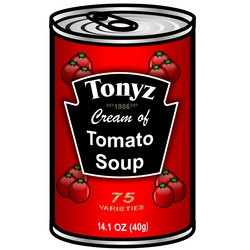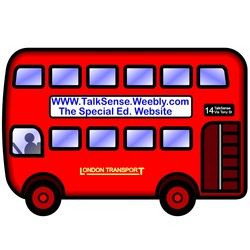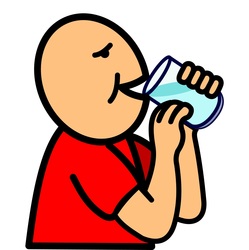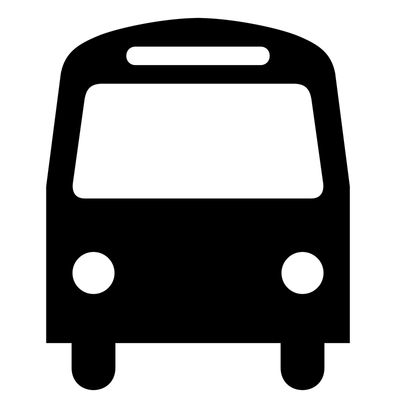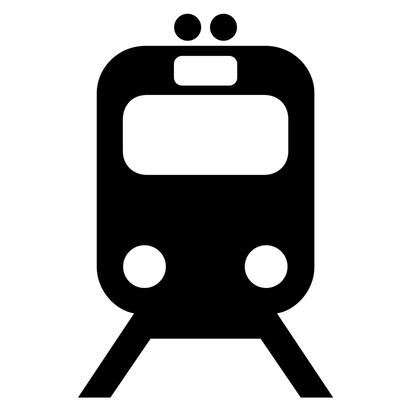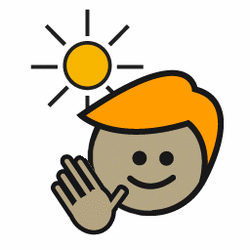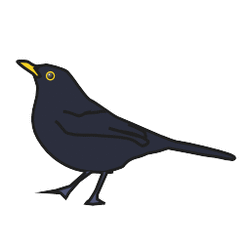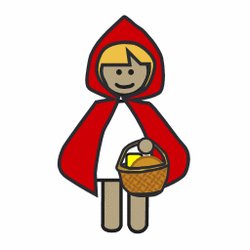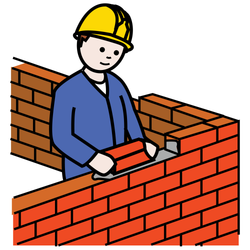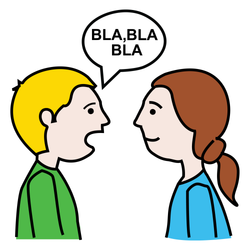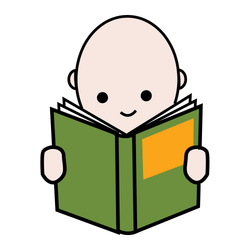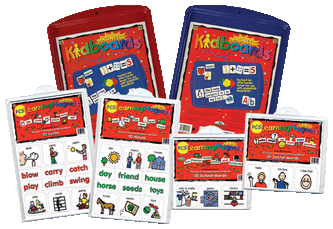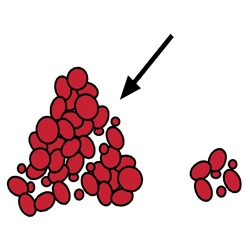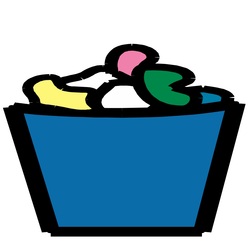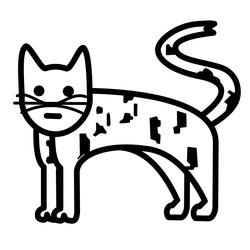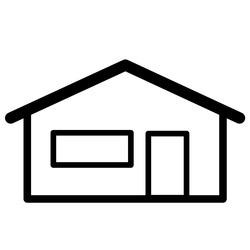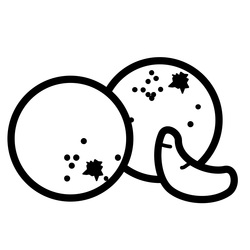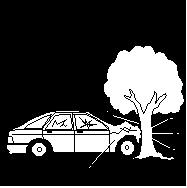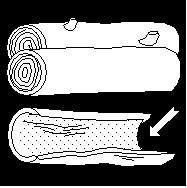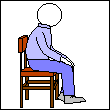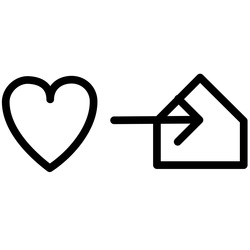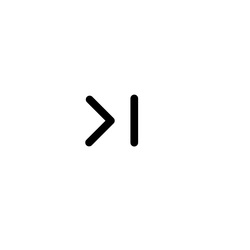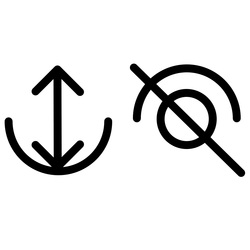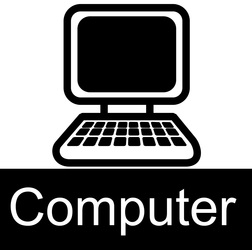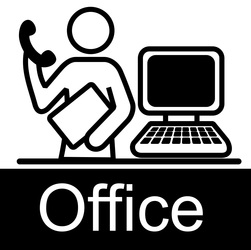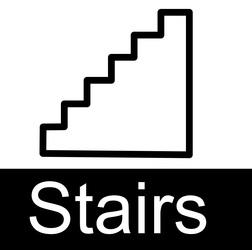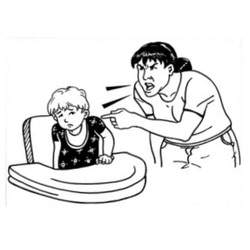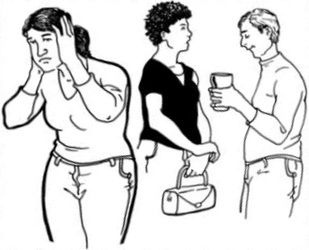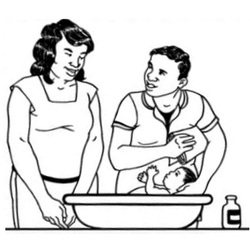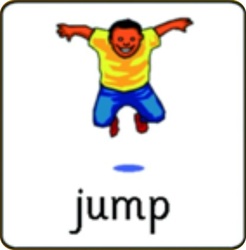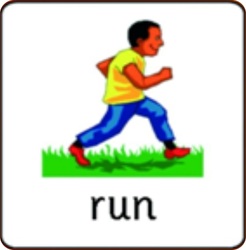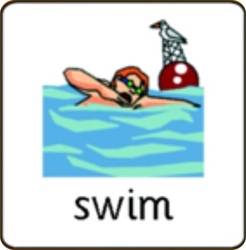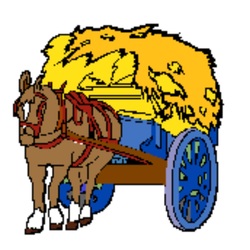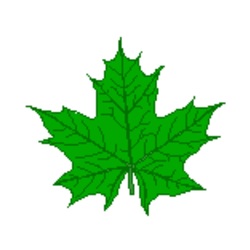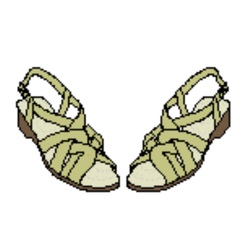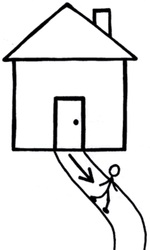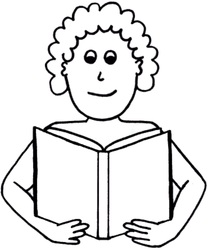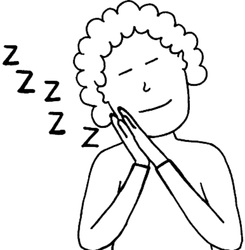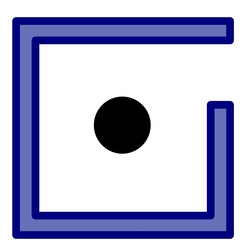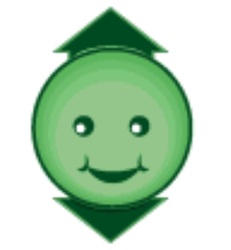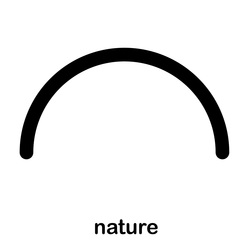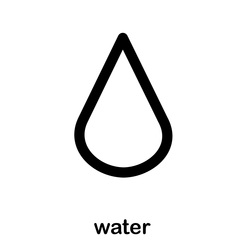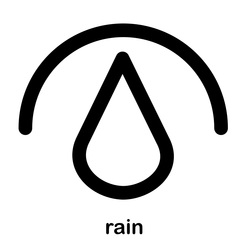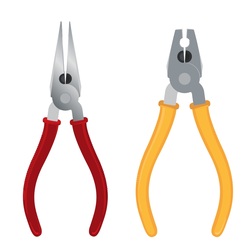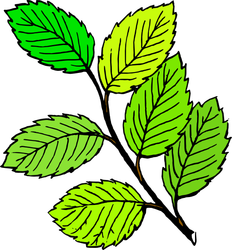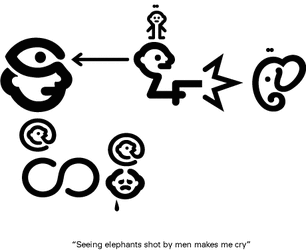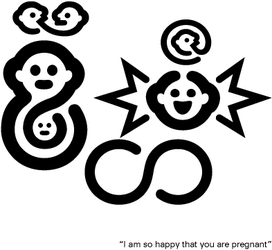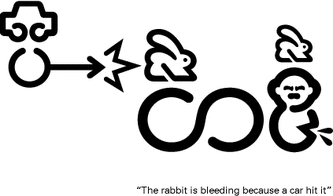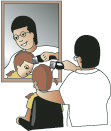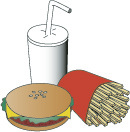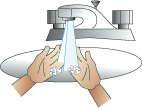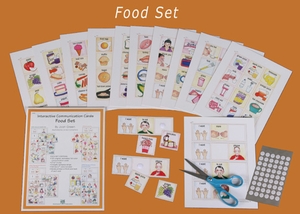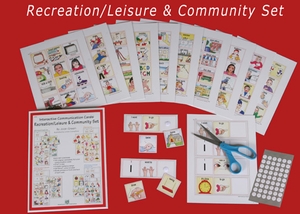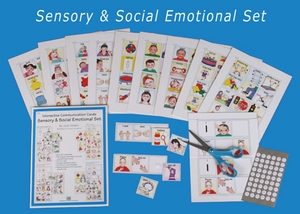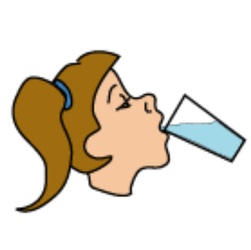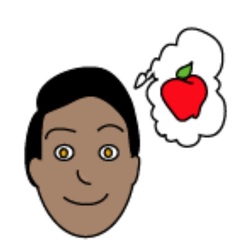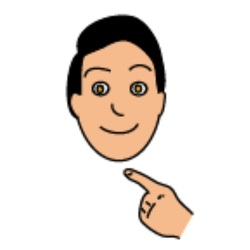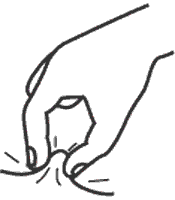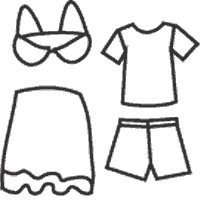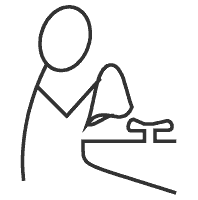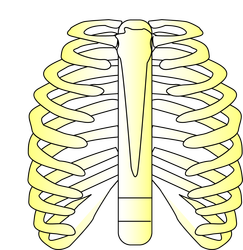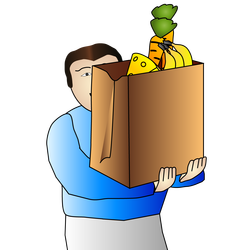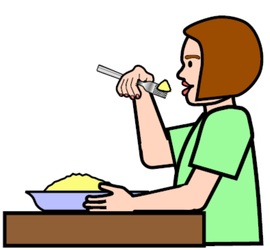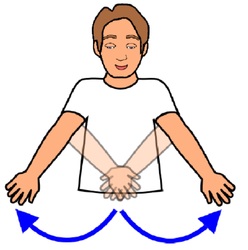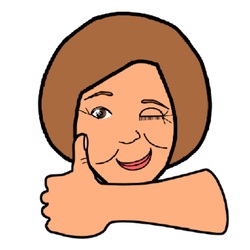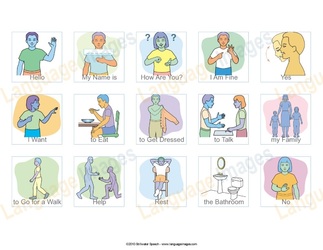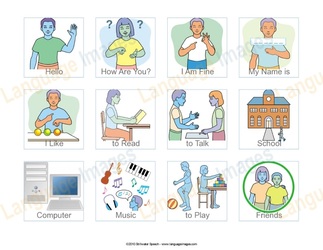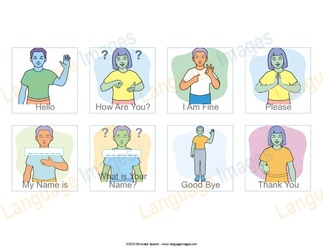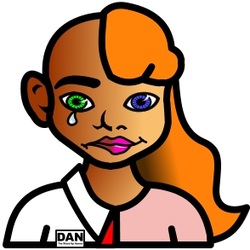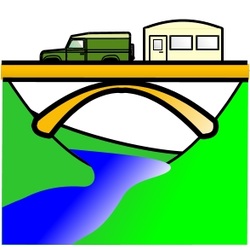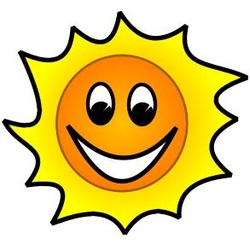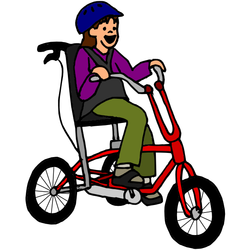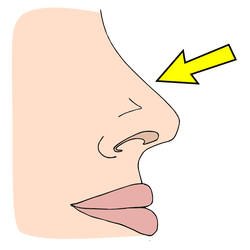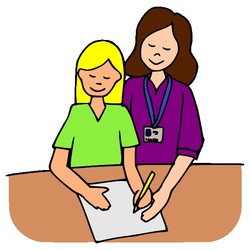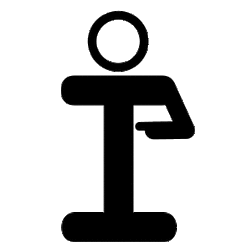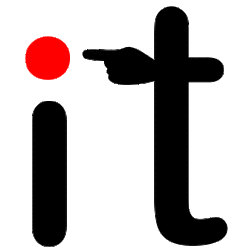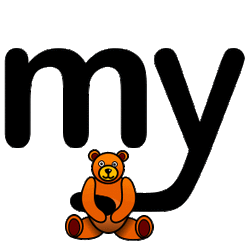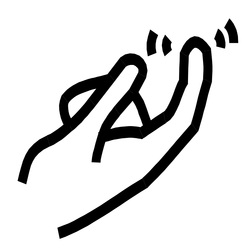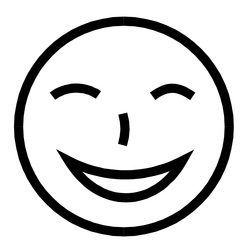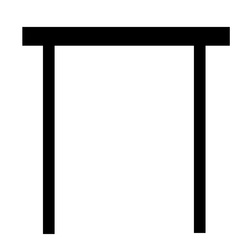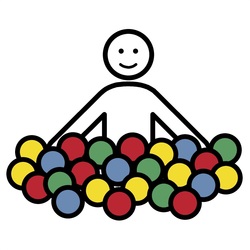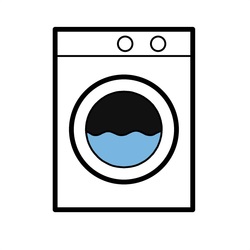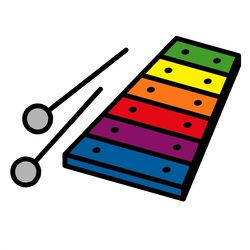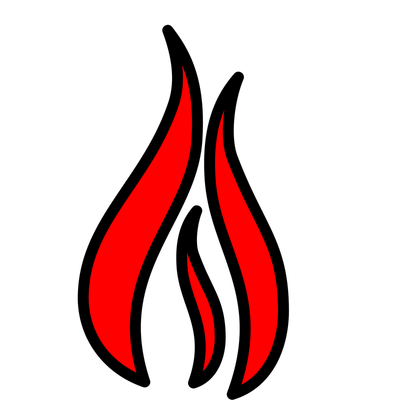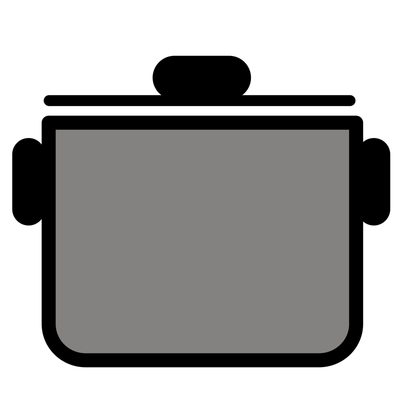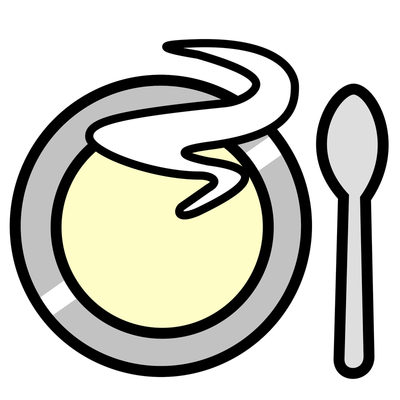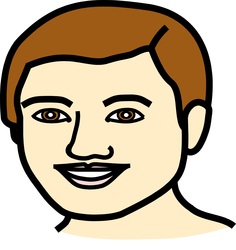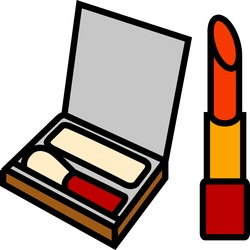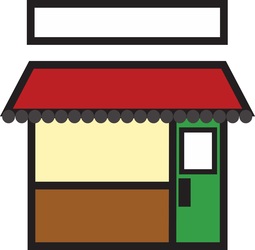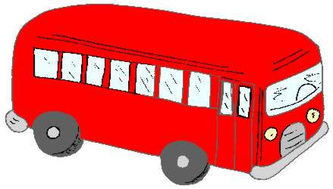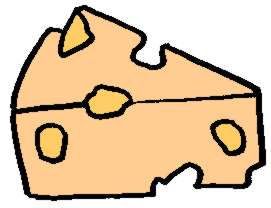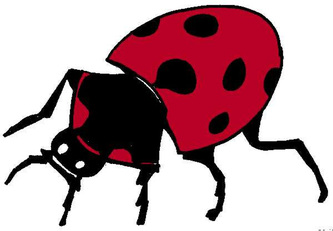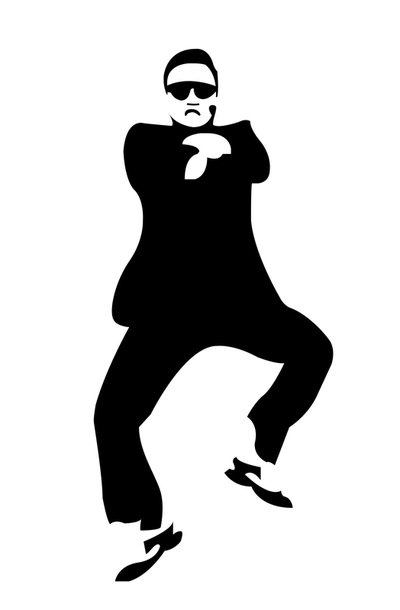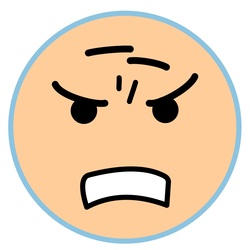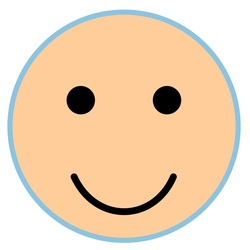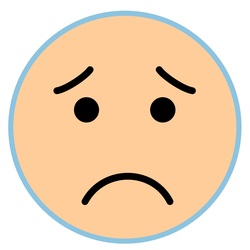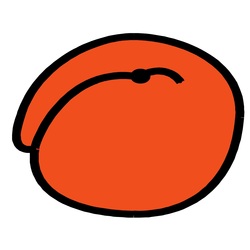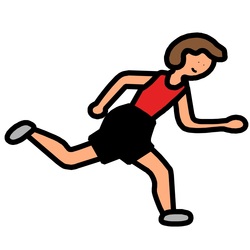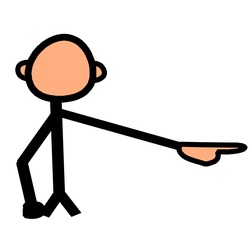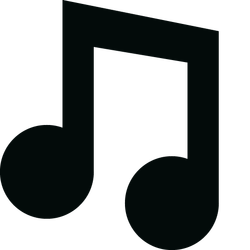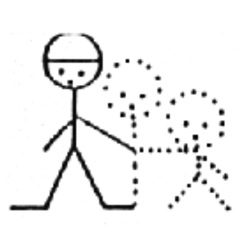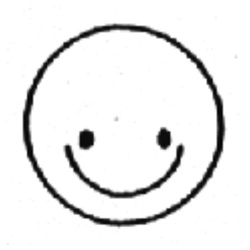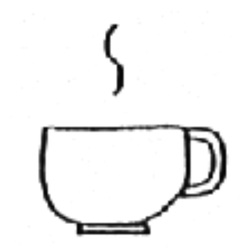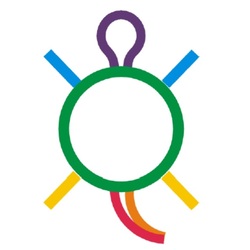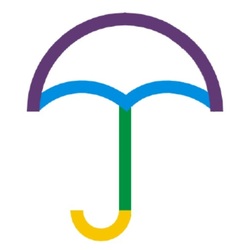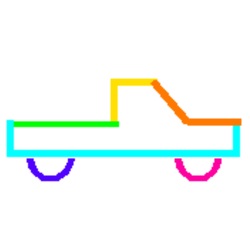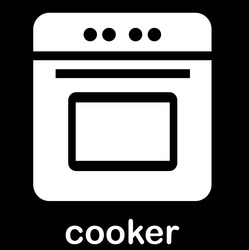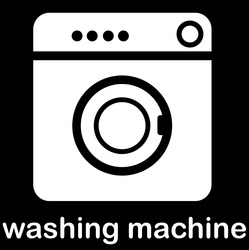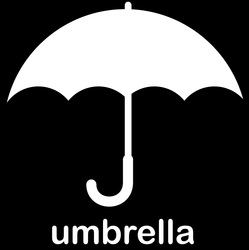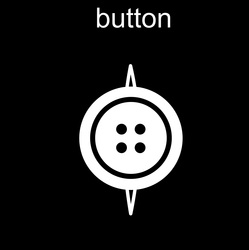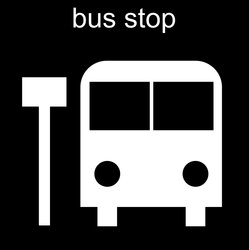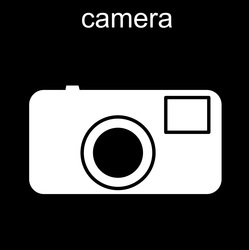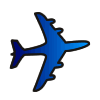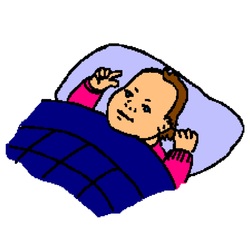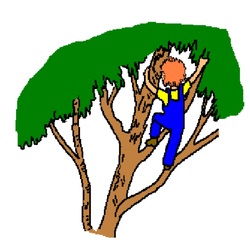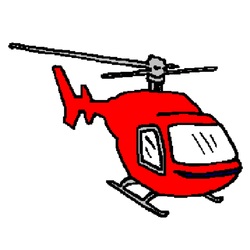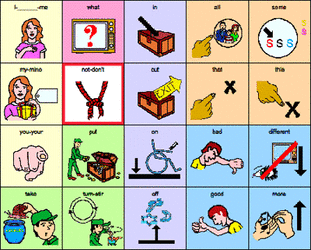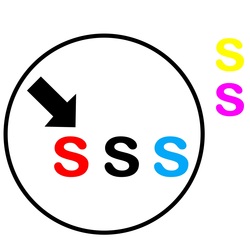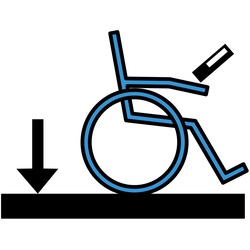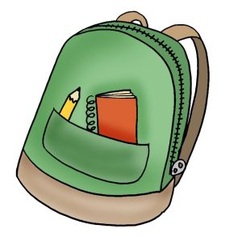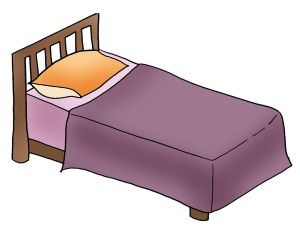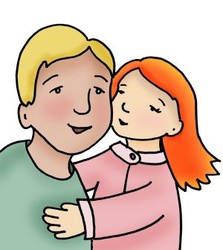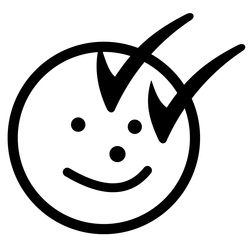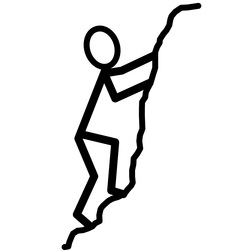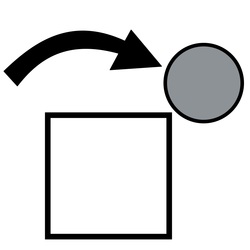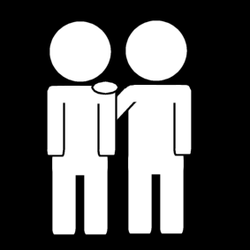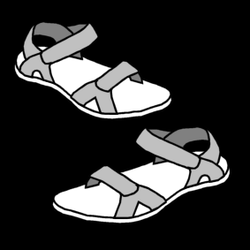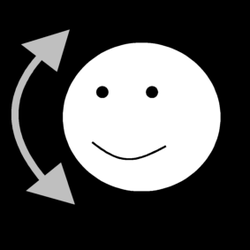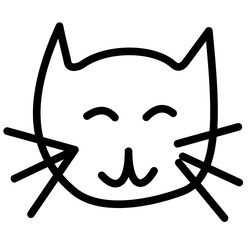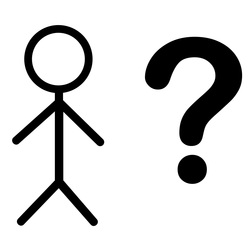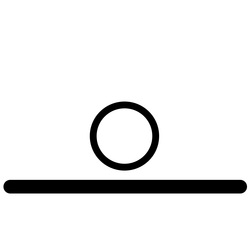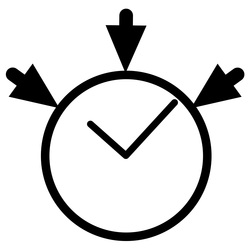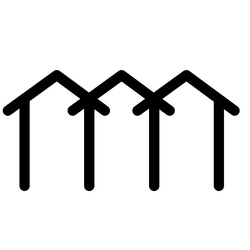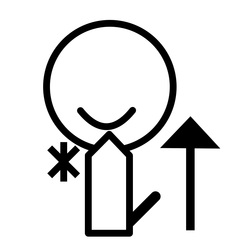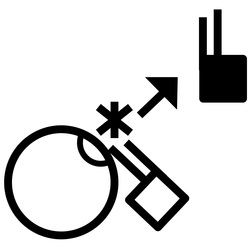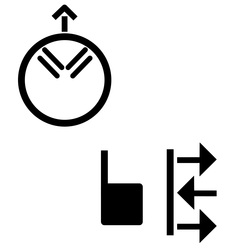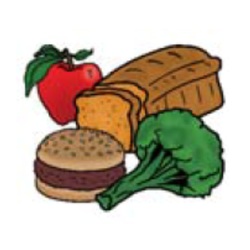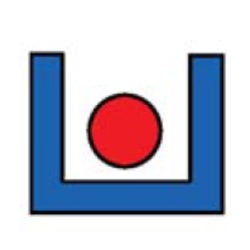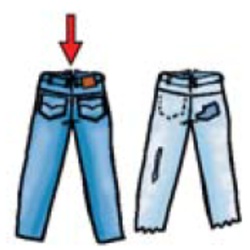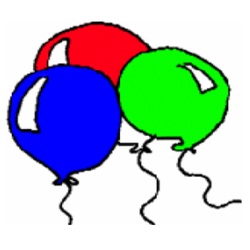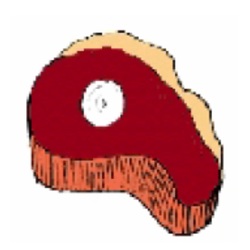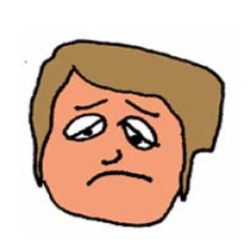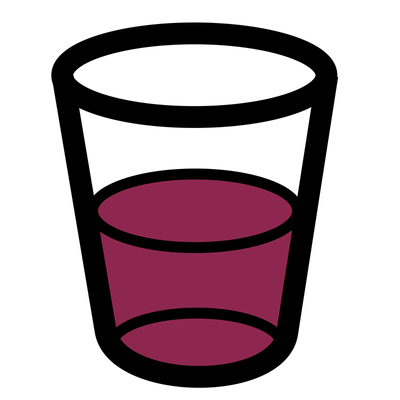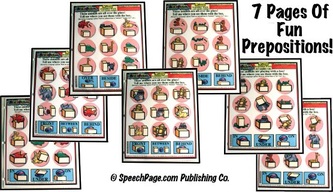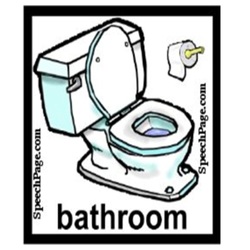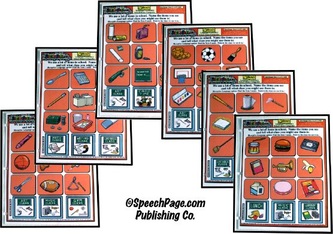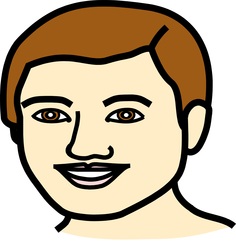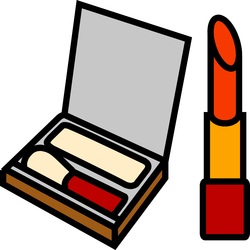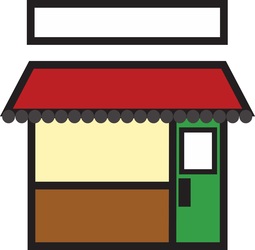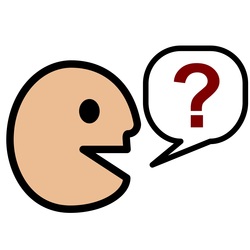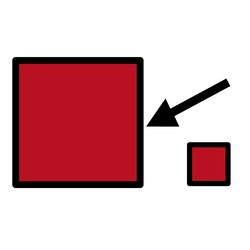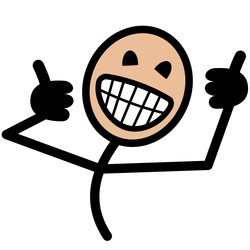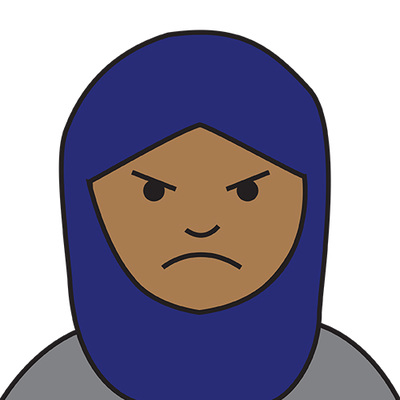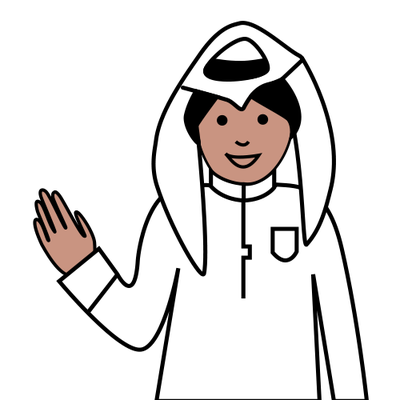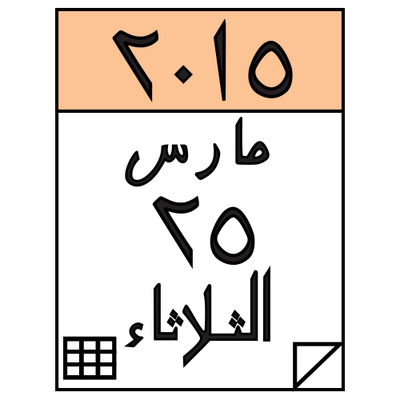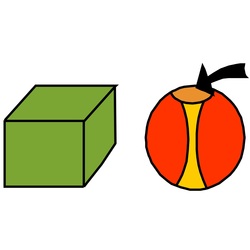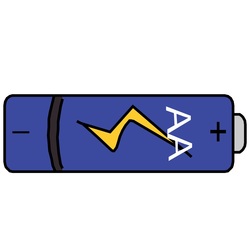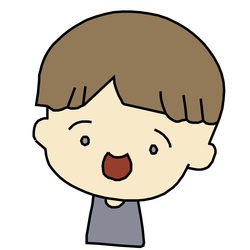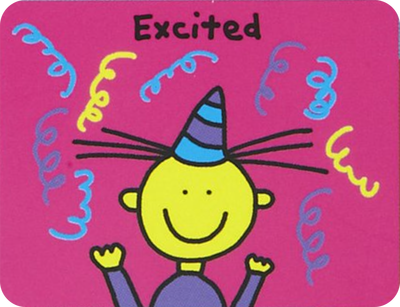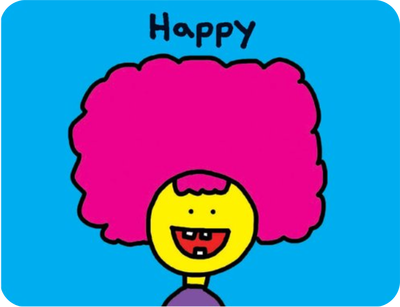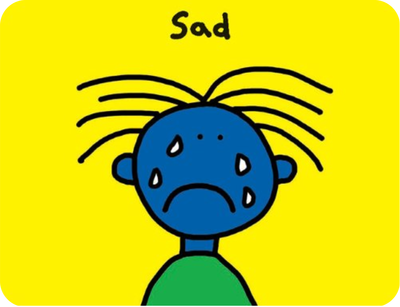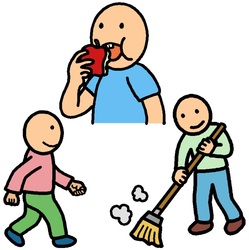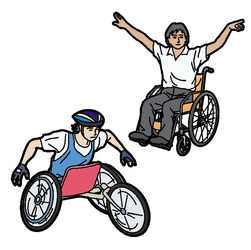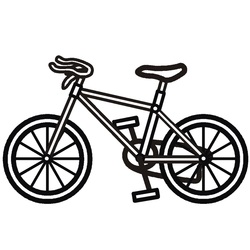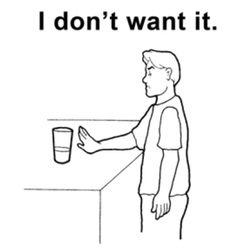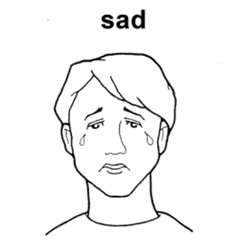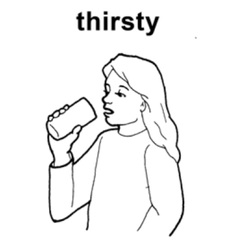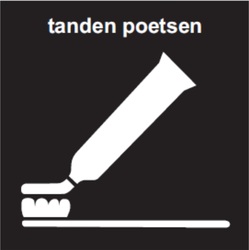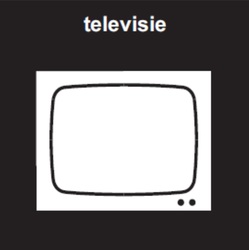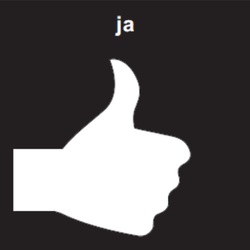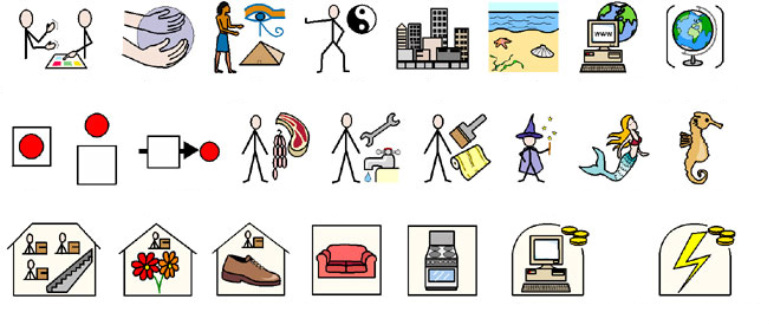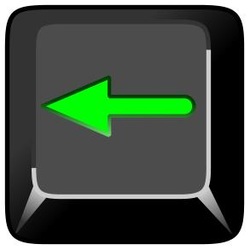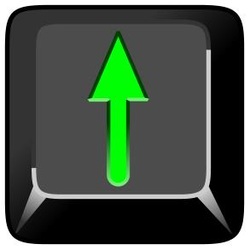Comparative Semiotics:
What Symbols Are There?
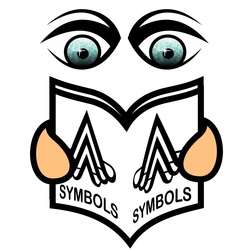
There are more symbol sets than you probably realise. All of them are reasobaly good but some of them are better and a few of them are free for non-commercial use.
This page details the symbol sets of which I am aware and, if possible, shows a few examples of each. Sometimes they are so jealously guarded that it is hard to get examples and sometimes even harder to get specific details!
Are there any symbol sets missing of which you know? Contact me and let me know! If your set is misrepresented in any way, please let me know and I will update the page.
Apart from the first set (mine!), all others are in alphabetical order and NOT in any order of importance or quality or any other such criteria. Talksense is not commercially linked to any symbol set apart from its own and that, I give away free of charge!
There are over 50 symbol sets below and counting! Some come into existence and then simply disappear (indeed, some of the sets below appear to have ceased trading), some have longevity. In each case, I have tried to represent the symbol set in the best possible light. However, this is not always easy as many companies jealously guard their symbols and I have to resort to subterfuge to try to illustrate a few symbols so that you can make a comparison.This means that some symbols are not shown in their best light because of the way I have had to capture them. Over time I will try to remedy this by contacting the vendors directly and seeking a few examples to use on this page. However, for now, please recognise that some images may be a little blurry, not because they are poorly drawn but, rather, because I have had to capture them from screen shots and then (perhaps enlarge them so that they can be seen).
I will show three 'general area' symbols from each set and also three symbols of hard-to-illustrate words (these will come later!). Where the symbol set has no graphic for such words, I will report. Where the symbol set does not seek to cover such vocabulary, I will also report. My intention is not to criticise any set but, merely, to illustrate them for your edification and enlightenment and to advertise the symbols for each company should you wish to investigate a particular set further. In each instance, I will try to quote the number in each set and the price, etc. The price will obviously fluctuate over time and from country to country and therefore you should not take the figures as gospel but merely an indication of the comparative prices. Also, the number of symbols in any set tends to grow over a period: again, you should not take the figures as gospel but merely an indication of the relative sizes of each set.
Note that black and white symbols can differ! Some sets are black line drawings on a white background while others are white drawings on a black background. The examples provided should make explicit which set is which.
Where symbol sets once existed but have now (apparently) ceased to trade I have included a reference together with the 'missing symbol set'
icon. If you have any further information of a particular missing set and/or could send me some examples to further illustarte this page, I would be most grateful.
Click on the title image within each set to be taken to the website for the symbol set.
PAGE CONTINUALLY IN DEVELOPMENT
LAST UPDATED 7th December 2013
This page details the symbol sets of which I am aware and, if possible, shows a few examples of each. Sometimes they are so jealously guarded that it is hard to get examples and sometimes even harder to get specific details!
Are there any symbol sets missing of which you know? Contact me and let me know! If your set is misrepresented in any way, please let me know and I will update the page.
Apart from the first set (mine!), all others are in alphabetical order and NOT in any order of importance or quality or any other such criteria. Talksense is not commercially linked to any symbol set apart from its own and that, I give away free of charge!
There are over 50 symbol sets below and counting! Some come into existence and then simply disappear (indeed, some of the sets below appear to have ceased trading), some have longevity. In each case, I have tried to represent the symbol set in the best possible light. However, this is not always easy as many companies jealously guard their symbols and I have to resort to subterfuge to try to illustrate a few symbols so that you can make a comparison.This means that some symbols are not shown in their best light because of the way I have had to capture them. Over time I will try to remedy this by contacting the vendors directly and seeking a few examples to use on this page. However, for now, please recognise that some images may be a little blurry, not because they are poorly drawn but, rather, because I have had to capture them from screen shots and then (perhaps enlarge them so that they can be seen).
I will show three 'general area' symbols from each set and also three symbols of hard-to-illustrate words (these will come later!). Where the symbol set has no graphic for such words, I will report. Where the symbol set does not seek to cover such vocabulary, I will also report. My intention is not to criticise any set but, merely, to illustrate them for your edification and enlightenment and to advertise the symbols for each company should you wish to investigate a particular set further. In each instance, I will try to quote the number in each set and the price, etc. The price will obviously fluctuate over time and from country to country and therefore you should not take the figures as gospel but merely an indication of the comparative prices. Also, the number of symbols in any set tends to grow over a period: again, you should not take the figures as gospel but merely an indication of the relative sizes of each set.
Note that black and white symbols can differ! Some sets are black line drawings on a white background while others are white drawings on a black background. The examples provided should make explicit which set is which.
Where symbol sets once existed but have now (apparently) ceased to trade I have included a reference together with the 'missing symbol set'
icon. If you have any further information of a particular missing set and/or could send me some examples to further illustarte this page, I would be most grateful.
Click on the title image within each set to be taken to the website for the symbol set.
PAGE CONTINUALLY IN DEVELOPMENT
LAST UPDATED 7th December 2013
Sensible Symbols from TalkSense
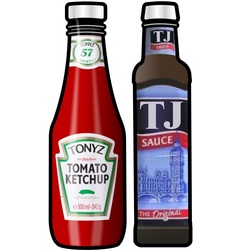
Source: TalkSense
Number in Set: 50,000 (and growing)
Cost: Free
Format: .wmf, .gif, .jpg, .png (mostly .png transparent background)
Type: Colour, few B&W
Sensible Symbols from talksense are available from the TalkSense website and are FREE of charge for non-commercial purposes. They include all major categories and are being added to the site almost daily. Go here to locate the Symbol Give-Away pages. You do not download from the website but, rather, send a request for the symbols you require and TalkSense will send them to you, normally, in a zipped folder.
The symbols are quite realistic in many instances (as in the example). More examples are given below and there are many more on the Symbol Give Away pages.
Abstract (mostly 3 Dimensional) Symbol Sets
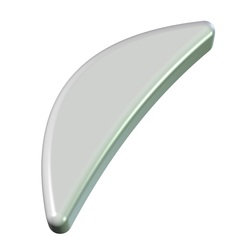
A few abstract three dimensional symbols sets of varying levels of complexity have been utilised since the early 1970's. Originally designed for research in teaching language to apes they were adapted to work with people who were experiencing Severe Learning Difficulties with some degree of success although why the developers chose to continue to use (at least in part) abstract shapes in this process is beyond my cognition (although I understand the original premise from the work with apes). Some of the systems used are detailed below. The review is not meant to be complete or fully explanatory but to present some of the early work from which, interested parties, may continue to study.
Premack Symbols: The Premack's research to determine whether an animal could deveop 'language' was originally undertaken in the early 1970's with a chimpanzee called Sarah. Sarah was taught using flat, arbitrarily shaped pieces of plastic which each represented words. Use of the shapes was reinforced through a reward system so that Sarah learnt to discriminate and manipulte the shapes.
Non-SLIP Symbols: Inspired by the work of the Premack's, Carrier, J.K..,and Peak, T. (1975 Non-Speech Language Initiation Program. H. & H. Enterprises Lawrence, Kansas) devised a system of developing language skills in children experiencing profound learning difficulties. They called the system Non-SLIP which stood for the Non-Speech Language Initiation Program. The symbol set comprised 30 white plastic arbitrary (why?!) shapes which were ascribed a particular meaning (either a noun, verb, or a preposition). The children were taught the meaning of each of the shapes which were colour coded to facilitate their correct ordering on a display board with seven slots. The program was not designed as a communication system but rather as a means of initiating language.
Deich and Hodges Symbols: Premack's work also served to inspire Ruth Deich and Patricia Hodges research into the use of symbols with children. Approximately 100 plastic symbols were used; some were iconic but many were still abstract. The symbols were colour coded according to speech functions.and a vigorous teaching system designed to build children's awareness. An account of their study is still available in their published work (Deich R.F. and Hodges P.M. 1977, Language Without Speech. Souvenir Press, London.) which I was still able to obtain recently for one penny from Amazon!
Yerkish Symbols: Yerkish was not a 3-D symbol set but rather a set of astract symbols displayed on a large vertically mounted (somewhat computer like) 'keyboard'. Yerkish was an artificial language developed for use by apes. It employed an interchangable 125 key 'keyboard' comprised of 'lexigrams': symbols that corresponded to objects and ideas. The keyboard was divided into 5 vertically mounted panels of 25 keys each. The lexigrams comprised three base colours (mixed to form 7 'hues') plus black and nine (abstract) graphical elements arranged in differing combinations to represent each concept/word of the language. The language (developed by Ernst Von Glaserfield) was used by Duane Rumbaugh and Sue Savage-Rumbaugh of Georgia State University while researching at the Yerkes National Primate Research Center (Emory University in Atlanta, Georgia). Primates were taught to communicate by means of the keyboard. In 1973, the first ape to be trained to communicate in Yerkish was called Lana.
There are obviously limitations to the use of (especially arbitrary) plastic shapes as a means to communication. Transportation and manipulation spring immediately to mind as problematic areas. However, early research in these areas undoubtedly influenced in some small way the development of many of the later symbol systems which evolved into the sets that are available today.
Premack Symbols: The Premack's research to determine whether an animal could deveop 'language' was originally undertaken in the early 1970's with a chimpanzee called Sarah. Sarah was taught using flat, arbitrarily shaped pieces of plastic which each represented words. Use of the shapes was reinforced through a reward system so that Sarah learnt to discriminate and manipulte the shapes.
Non-SLIP Symbols: Inspired by the work of the Premack's, Carrier, J.K..,and Peak, T. (1975 Non-Speech Language Initiation Program. H. & H. Enterprises Lawrence, Kansas) devised a system of developing language skills in children experiencing profound learning difficulties. They called the system Non-SLIP which stood for the Non-Speech Language Initiation Program. The symbol set comprised 30 white plastic arbitrary (why?!) shapes which were ascribed a particular meaning (either a noun, verb, or a preposition). The children were taught the meaning of each of the shapes which were colour coded to facilitate their correct ordering on a display board with seven slots. The program was not designed as a communication system but rather as a means of initiating language.
Deich and Hodges Symbols: Premack's work also served to inspire Ruth Deich and Patricia Hodges research into the use of symbols with children. Approximately 100 plastic symbols were used; some were iconic but many were still abstract. The symbols were colour coded according to speech functions.and a vigorous teaching system designed to build children's awareness. An account of their study is still available in their published work (Deich R.F. and Hodges P.M. 1977, Language Without Speech. Souvenir Press, London.) which I was still able to obtain recently for one penny from Amazon!
Yerkish Symbols: Yerkish was not a 3-D symbol set but rather a set of astract symbols displayed on a large vertically mounted (somewhat computer like) 'keyboard'. Yerkish was an artificial language developed for use by apes. It employed an interchangable 125 key 'keyboard' comprised of 'lexigrams': symbols that corresponded to objects and ideas. The keyboard was divided into 5 vertically mounted panels of 25 keys each. The lexigrams comprised three base colours (mixed to form 7 'hues') plus black and nine (abstract) graphical elements arranged in differing combinations to represent each concept/word of the language. The language (developed by Ernst Von Glaserfield) was used by Duane Rumbaugh and Sue Savage-Rumbaugh of Georgia State University while researching at the Yerkes National Primate Research Center (Emory University in Atlanta, Georgia). Primates were taught to communicate by means of the keyboard. In 1973, the first ape to be trained to communicate in Yerkish was called Lana.
There are obviously limitations to the use of (especially arbitrary) plastic shapes as a means to communication. Transportation and manipulation spring immediately to mind as problematic areas. However, early research in these areas undoubtedly influenced in some small way the development of many of the later symbol systems which evolved into the sets that are available today.
Aiga Symbols
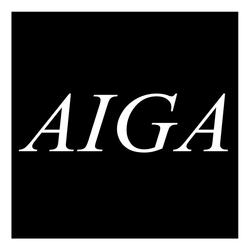
Source: Aiga, USA
Number in Set: 50 symbols
Cost: Free.
Format: .gif and .eps
Type: B & W
A set of 50 American passenger/pedestrian 'access' symbols developed by AIGA is available for all to download, free of charge. Click on image left to be transported to the site.
Number in Set: 50 symbols
Cost: Free.
Format: .gif and .eps
Type: B & W
A set of 50 American passenger/pedestrian 'access' symbols developed by AIGA is available for all to download, free of charge. Click on image left to be transported to the site.
Axelia Symbols
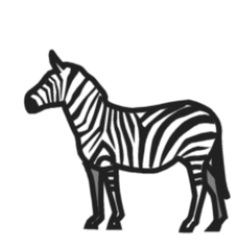
Source: Axelia, France
Number in Set: Approx 3,000 symbols
Cost: The symbols come with the software and the software starts at €49.
Format: .gif (some are also animated .gifs) 256 x 256 pixels
Type: Colour
Axelia Symbols are a collection of symbols from France (the site is therefore in French). Nice clear symbols, well drawn, some are animated.
ARASAAC Symbols
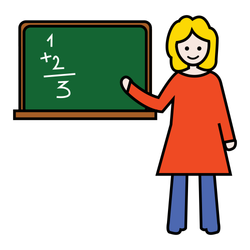
Source: ARASAAC (Spain)
Number in Set: approx 10,000 colour symbols and 9,000 B&W
Cost: Free
Format: .png
Type: Colour and B&W
An excellent FREE resource rom ARASAAC in Spain which I thoroughly recommend to you. A comprehensive set of well drawn and thought out symbols in both colour and black and white available as .png graphics which will provide a transparent background for ease of use. Some symbols have a Spanish flavour (I wonder why?!) but the vast majority are of use all across the world. Download the coomplete set from the website by clicking on the image left which will open a separate window on the ARASAAC site.
The symbols are simple and clear. More examples are given below.
Barker Creek
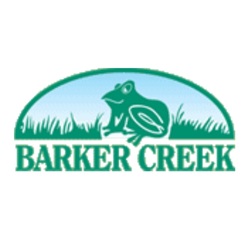
Source: Barker Creek
Number in Set: approx 270 magentic PCS symbols
Cost: $130
Format: Magnetic PCS symbols
Type: Colour
Magnetic PCS symbols resource. However, as you can purchase magnetic printer paper these days (from around 80 pence per A4 sheet) and if you have Boardmaker or the original PCS set of symbols, why not simply make your own? For PCS symbols see below this page.
Beeldboek/Beeldlezen Symbols
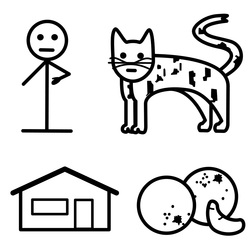
Source: Handicom, Netherands. Symbols for Windows software.
Number in Set: approx 1,100 B&W symbols
Cost: at least €250 for basic 'Symbol For Windows' software then additional
costs for extra parts of program plus cost of symbol library
(another €246)!
Format: N/A
Type: B&W
Beeldboek (ImageBook) is a graphical language with simple, B&W, stylized images. It was developed in the 1990s by the Stichting Beeldlezen in the Netherlands and was meant to be used with people who have a Learning Difficulty. By request of rdgKompagne (then called 'Kompagne'), a Windows program was developed to work with this symbol system. With this program, anyone working with people with Learning Difficulties could make communication aids with Beeldlezen symbols, or shopping lists, programs for the day, teaching materials, etc. Communication via Beeldboek images was made much easier this way. The Dutch compnay Handicom has contributed to the development of the Beeldboek software by raising the quality of the images (on screen and on paper) and by improving the managing system for the database. In 1998, Handicom added about 150 symbols to the symbol system and there are now about 1100 symbols in total. The original software is not available anymore. Instead you can buy the Beeldboek symbol database in combination with the Handicom 'Symbol for Windows' software.
Beta Symbols
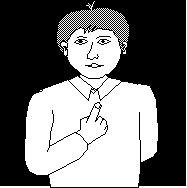
Source: Beta VZW, Sergeysstraat 59, 3020 Herent Telefoon, Belgium
Number in Set: Unknown
Cost: Free Download of Black and white symbol set. Colour set from €471
Format: Vector graphics of some form
Type: Colour and B&W
Number in Set: Unknown
Cost: Free Download of Black and white symbol set. Colour set from €471
Format: Vector graphics of some form
Type: Colour and B&W
Blissymbols
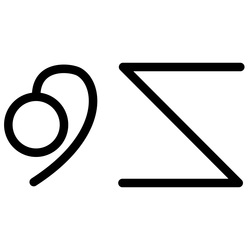
Source: Blissymbolics International, Sweden
Number in Set: Approx 4,500
Cost: N/A
Format: N/A
Type: Draw your own with stencil set after training course.
Symbols are aso available through software titles
Blissymbolics is a communication system originally developed by Charles K. Bliss (1897-1985) for the purpose of international communication. It was first applied to the communication of children with physical disabilities by an interdisciplinary team led by Shirley McNaughton at the Ontario Crippled Children's Centre (now the Bloorview MacMillan Centre) in 1971.
The Blissymbolics language is currently composed of over 4,000 graphic symbols. Each symbol or Bliss-word is composed of one or more Bliss-characters which can be combined and recombined in endless ways to create new symbols. Bliss-words can be sequenced to form many types of sentences and express many grammatical capabilities. Simple shapes are used to keep the symbols easy and fast to draw and because both abstract and concrete levels of concepts can be represented, Blissymbolics can be applied both to children and adults and are appropriate for persons with a wide range of intellectual abilities.
Other sites for Blissymbol information etc:
http://www.symbols.net/suttonglyphs/
http://en.wikipedia.org/wiki/Blissymbols
Number in Set: Approx 4,500
Cost: N/A
Format: N/A
Type: Draw your own with stencil set after training course.
Symbols are aso available through software titles
Blissymbolics is a communication system originally developed by Charles K. Bliss (1897-1985) for the purpose of international communication. It was first applied to the communication of children with physical disabilities by an interdisciplinary team led by Shirley McNaughton at the Ontario Crippled Children's Centre (now the Bloorview MacMillan Centre) in 1971.
The Blissymbolics language is currently composed of over 4,000 graphic symbols. Each symbol or Bliss-word is composed of one or more Bliss-characters which can be combined and recombined in endless ways to create new symbols. Bliss-words can be sequenced to form many types of sentences and express many grammatical capabilities. Simple shapes are used to keep the symbols easy and fast to draw and because both abstract and concrete levels of concepts can be represented, Blissymbolics can be applied both to children and adults and are appropriate for persons with a wide range of intellectual abilities.
Other sites for Blissymbol information etc:
http://www.symbols.net/suttonglyphs/
http://en.wikipedia.org/wiki/Blissymbols
Bonnington Symbol System
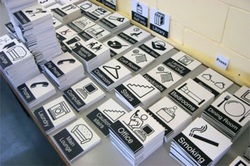
Source: http://www.communicationforumscotland.org.uk/2010/TK_Resources_BSS.php
Number in Set: 19 Word Documents containing approx 50 symbols in each
Cost: Free
Format: Word Document (copy and paste images from Word documents)
Type: Mostly B&W (a few in colour)
Originally from Edinburgh City Council, Scotland, this black and white symbol set (approximately 600 symbols) was designed to help people with communication problems access information and services throughout the community. Very nice clear symbols. A good resource.
Number in Set: 19 Word Documents containing approx 50 symbols in each
Cost: Free
Format: Word Document (copy and paste images from Word documents)
Type: Mostly B&W (a few in colour)
Originally from Edinburgh City Council, Scotland, this black and white symbol set (approximately 600 symbols) was designed to help people with communication problems access information and services throughout the community. Very nice clear symbols. A good resource.
Change Symbols
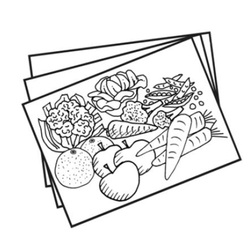
Source: Change, Unit 41, Shine, Harehills Road, Leeds LS8 5HS
Number in Set: approx 500 symbols per set
Cost: Price varies according to set and type of use. See site for latest details.
Format:
Type: B&W
50 + BW symbols in each set. The picture sets are mainly on special area social topics:
Sets on everyday items, health issues, healthy eating, you and your baby, housing, pregnancy, physical abuse, sexual abuse, bullying, parents with learning difficulties, etc.Over 6,000 symbols in the complete set.
Number in Set: approx 500 symbols per set
Cost: Price varies according to set and type of use. See site for latest details.
Format:
Type: B&W
50 + BW symbols in each set. The picture sets are mainly on special area social topics:
Sets on everyday items, health issues, healthy eating, you and your baby, housing, pregnancy, physical abuse, sexual abuse, bullying, parents with learning difficulties, etc.Over 6,000 symbols in the complete set.
Clicker Symbols
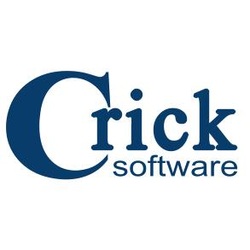
Source: Crick Software Ltd, Crick House, Boarden Close, Moulton Park,
Northampton NN3 6LF
Number in Set: 1,800 +
Cost: Clicker 5 is (July 2011) £125
Format: N/A ... Only work inside Crick Software programs not available as an
external set.
Type: Colour
Not really an AAC symbol set but rather a set of symbols developed to support the excellent Crick range of software particularly Clicker 5.
Compic Symbols
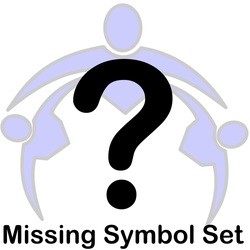
Source: www.Compic.com (Australia)
Number in Set: Approx1,750 symbols
Cost: ??
Format: ??
Type: B&W
Site seems to have disappeared and you are now taken to a rather sexually orientated screen on which links lead nowhere. If you have any further information on this set of symbols please let me know.
Dilite Picture Cards
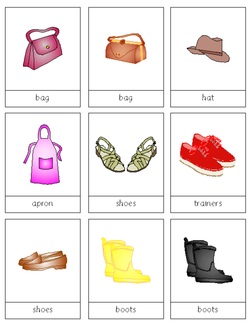
Source: Bry-Backmanor.org
Number in Set: 9 symbols on each card. Sets have vaying umbers of cards and
there are presently 12 communication card sets. However, there
are 112 activity sets
Cost: I believe they are FREE to download as pages from the web
Format: .gif
Type: Colour, B&W
Symbol pages originally designed by Diana Tunicliff for work with Learners with Autism. They appear to be free for non-commercial use direct from the web. They are arranged in topic and category areas in both black & white and colour. The communication cards are available at the bottom of the linked page (click on symbol left). They are not available to download as individual symbols as far as I can tell. Nice to print and and cut up to use as a resource.
Do2Learn Symbols
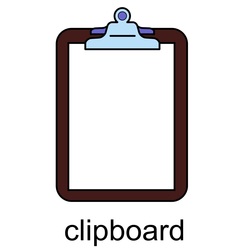
Source: Do2Learn, 3204 Churchill Road, Raleigh, NC 27607, USA
Number in Set: Approx 2,500 symbols
Cost: B&W are free to print from web. Colour sets are available through their
software but cannot be purchased separatley. I cannot find a price from
their website!!
Format: Unknown
Type: Colour and B&W
much smaller subset of the Make - A - Schedule set. Also Do2Learn picture card sets are available from around $8 + per set - these are colour.The colour symbols are better than the B&W set in my opinion but the B&W are free (you print from the web, no download of set) generally a reasonable set of symbols all round.
Dynasyms
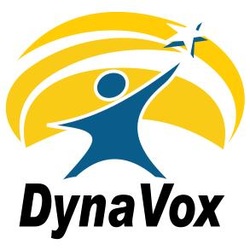
Source: DynaVox Mayer-Johnson, 2100 Wharton Street, Suite 400,
Pittsburgh, PA 15203, USA
Number in Set: Approx 5,000 + symbols (more available through Boardmaker). There are
also about 60 additional animated symbols.
Cost: Not available as a stand-alone set. Only with Dynavox communication aids
or through the Boardmaker software
Format: N/A
Type: Colour and B&W
Dynasyms are only available on the Dynavox range of products or through BoardMaker. Since Dynavox acquire Mayer Johnson and the PCS range of sysmbol, the Dynavox devices now have a mixture of both sets available and in use. A great place to study Dynasyms can be found at the Poppin website.
Dynasyms are based on a hand drawn communication system called PICSYMS (see below) first published in 1985. Faith Carlson, a Speech and Language Pathologist developed these during her work with children and adults at Meyer Children's Rehabilitation Institute, University of Nebraska Medical Centre. Some of the early PICSYMS concepts have been maintained through the continuing development of the set by Faith: for example, the positional concepts (such as in and out) have changed very little. The original or classic Dynasyms were black and white symbols created for the early Dynavox communication devices. There were 800 symbols in the very first set. For the Dynavox2c, a new colour set was created of over 1,700 symbols. 6000 Vector drawn symbols were added for the DV4 series of devices with additional greyscale version for the Boardmaker version of Dynasyms.
Earth Language Symbols
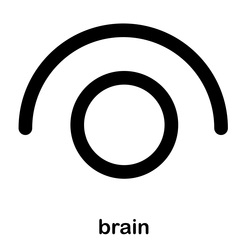
Source: Yoshiko McFarland
Number in Set: 91 combinable graphic elements used to create all vocabulary
Cost: I believe it is free
Format: N/A
Type: B&W line drawings
Earth Language symbols are somewhat similar in style to Blissymbols. They were originally developed in 1988 by Yoshiko McFarland. It is a global language system. Earth Language
works with a total of 91 symbols including 70 bases, numerals, grammatical marks and
brackets for managing information. All the symbols have a simple geometrical shape, located in a same size square; each of them has a number, ASCII, hand sign and its one-syllable name (vocal codes). It is possible to speak EL using the vocal codes but it appears that visual communication takes priority over speech in EL. The website is fairly comprehensive although the English is not great (but OK) which makes it a little more difficult to understand all the concepts involved. Earth Language has a Facebook page.
Easy Vectors Symbols
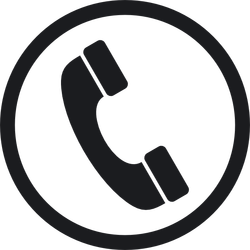
Source: Easy Vectors, ???
Number in Set: Approx 32,000 symbols
Cost: FREE to dowload. Download limit set
Format: Varies some not vector graphics but good quality nevertheless
(Vector graphics: will not pixellate when expanded)
Type: B&W, Colour
A too-good-to-be-true service. The site advertises vector graphics of highest quality galore (over 32,000) on lots of different areas. If true, while it may not supply all your needs, it will certainly go a long way towards them! I was able to download the symbols shown here with no problem. There is a daily download limit set after which you are locked out until the following day. Some downloads turned out to contain nothing at all or just rubbish. My guess is that this site will not last too long so make good use of it while it is around!
Elephant's Memory Symbols
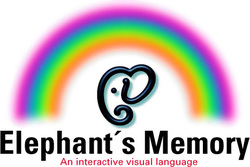
Source: Elephants Memory: A site by Timothy Ingen Housz
Number in Set: Approx 150 combinable graphic elements used to create sentences
Cost: FREE to download
Format: .gif
Type: B&W
I was not sure about this one! However, it existed and, so, I reported it! It grew on me! It's very interesting and the elements are extremely well drawn. At first, I was not sure I would be able to figure out the exact intended message from the elements (unless I could read the words below). I must admit, I would not be a great distance away and, therefore, I realised I was being unfair to the symbols' creator. Such a comment could equally be addressed at the majority of the symbol sets on this page: take away the accompanying words and most people can only guess at the possible meanings of the combinations of symbols of any set. You have to learn symbols to read them, they are not all transparent.
The third example below is obviously about a car and a rabbit. It tells a story. The car travelling along the road when it hits the rabbit. I like this site! I hope it stays around and grows. I have no idea why it's called 'Elephants Memory' although an elephant is supposed to never forget and I guarantee you won't forget the site once you have paid it a visit!
Eye-Cons
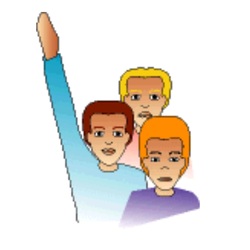
Source: KidAccess, 6526 Darlington Road, Pittsburgh, USA
Number in Set: Approx 1,000 symbols
Cost: $89
Format: .gif, .bmp
Type: Colour
Very nice set of coloured symbols in gif and bmp format on a CD from KidAccess out of Pitsburgh USA. Also available as pre-packed stickers in specific or customised categories. Symbols are clear and well drawn. Eye-Cons have sections on Music Therapy, Hippotherapy, Police & Emergency workers and for RDI (Relationship Development Intervention), as well as a general section.
Number in Set: Approx 1,000 symbols
Cost: $89
Format: .gif, .bmp
Type: Colour
Very nice set of coloured symbols in gif and bmp format on a CD from KidAccess out of Pitsburgh USA. Also available as pre-packed stickers in specific or customised categories. Symbols are clear and well drawn. Eye-Cons have sections on Music Therapy, Hippotherapy, Police & Emergency workers and for RDI (Relationship Development Intervention), as well as a general section.
Greenhouse Interactive Communication Cards
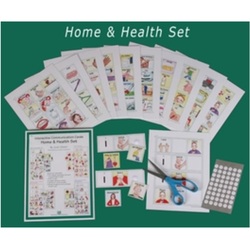
Source: 98229-3167, USA
Number in Set: Approx 500 symbols
Cost: $30 per set, four sets
Format: Available only as pre-printed materials
Type: Colour
Colour symbols available in one of four pre-produced printed sheet packs with approximately 120 symbols per set. The symbols are printed on a durable card stock and laminated for protection against moisture. All the pictures are well illustrated by Linda Comerford.
Gus Symbols
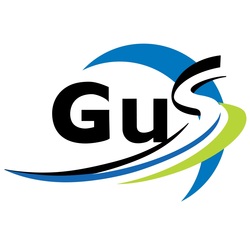
Source: GUS Communications, 1006 Lone Tree Court, Bellingham,
WA 98229-3167, USA
Number in Set: Approx 5,500 symbols
Cost: The Overboard software is available from $169
Format: Available only in the GUS communication systems and also in the
Overboard software. They appear to be colour .bmp files.
Type: Colour
Nice set of symbols available for the Gus communication systems and for Overboard (board creation) software. It is possible to see all of the symbols by going to the Overboard site. You can also download a free trial (30 day) version of the Overboard software. One of the nice features of the Gus Symbol set is that they are not gender nor race specifc and, you can usually choose who is performing whatever action both by race or by gender. Not all symbol sets provide that option although most have some symbols in these categories. One thing that I did not like about the Overboard software was that the symbols pasted into the board cells as .bmps which meant that they had a white square background. If then you filled the cell with a background colour, the white square background to the symbol remained and blocked out some of the colour cell fill. If the images had been .gifs or .png etc the complete cell background colour would have been seen. Overall, a very nice set of symbols.
WA 98229-3167, USA
Number in Set: Approx 5,500 symbols
Cost: The Overboard software is available from $169
Format: Available only in the GUS communication systems and also in the
Overboard software. They appear to be colour .bmp files.
Type: Colour
Nice set of symbols available for the Gus communication systems and for Overboard (board creation) software. It is possible to see all of the symbols by going to the Overboard site. You can also download a free trial (30 day) version of the Overboard software. One of the nice features of the Gus Symbol set is that they are not gender nor race specifc and, you can usually choose who is performing whatever action both by race or by gender. Not all symbol sets provide that option although most have some symbols in these categories. One thing that I did not like about the Overboard software was that the symbols pasted into the board cells as .bmps which meant that they had a white square background. If then you filled the cell with a background colour, the white square background to the symbol remained and blocked out some of the colour cell fill. If the images had been .gifs or .png etc the complete cell background colour would have been seen. Overall, a very nice set of symbols.
Helping To Grow Picture Cards
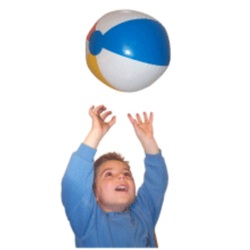
Source: Helping To Grow, ABA Materials, 7 Dufton Court, Greenvale,
VIC 3059, Australia
Number in Set: 15,000 images arrange in approx 80 categories
Cost: $100 per CD, UK version of software available.
Format: Comes with FlashPro 3 software which allows you to use the images
to build boards and schedules
Type: Colour images
Photographic set of approximately 15,000 images on CD from Australia for around £60. Using the FlashPro3 software that comes on the CD you are able to create communication boards and schedules in varying formats.
How Is It Symbols
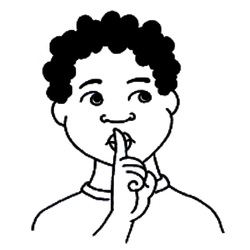
Source: NSPCC & Triangle NSPCC Publications and Information Unit,
NSPCC, 42 Curtain Road, London EC2A 3NH
Number in Set: Approx 383 symbols
Cost: Free to download from website
Format: ,gif, .bmp
Type: B&W
The 'How Is It symbols' were developed to provide an image vocabulary for children to talk
about about feelings, rights and safety, personal care and sexuality. They are simple black
and white line drawing and have a variety of symbols for each word so you can pick the most appropriate for a particular Learner. You can download the images one by one from the website or you can send for a CD containing the images free of charge. There is a small charge, however, if you want the booklet that accompanies the symbols however. Simple symbols for special social vocabulary.
Imaginart Symbols
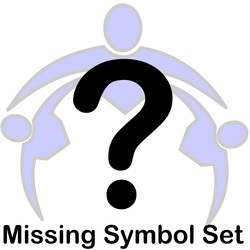
Source: Imaginart, 307 Arizona Street, Arkansas, Bisbee, 85603, USA
Number in Set: 1,000 plus
Cost: ???
Format: ???
Type: Colour
Previous links to this set seem to lead to a dead end. Information on what has become of this set is absent. If anyone knows if they are still around or what happened to them, please contact and let me know. I do not know if there was a connection between the Imaginart Symbol set and the Imagine Symbol set that follows. Both links now no longer work.
Imagine Symbols
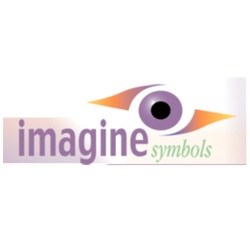
Source: Imagine Symbols
Number in Set: Approx 4,000 symbols
Cost: (was) FREE!
Format: .png
Type: Colour
This set was free from thier website BUT the link no longer appears to work. I do not know why
or what has happened to the symbol set. Te images are .png files. Highly colourful and recognisable, was a great resource; it seems a pity that it has disappeared.
If you have any further information on these symbols please let me know.
Number in Set: Approx 4,000 symbols
Cost: (was) FREE!
Format: .png
Type: Colour
This set was free from thier website BUT the link no longer appears to work. I do not know why
or what has happened to the symbol set. Te images are .png files. Highly colourful and recognisable, was a great resource; it seems a pity that it has disappeared.
If you have any further information on these symbols please let me know.
Ispeek Symbols
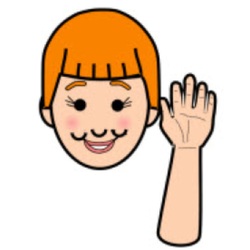
Source: ISPEEK Publications, Janet Dixon, 4 Wellesley Close,
Newton-Le Willows, WA12 9WD, UK.
Purchase from Jessica Kingsley Publishers
Number in Set: Approx 1,300 symbols per CD
Cost: £25 per CD. Three CDs available
Format: .wmf and .jpeg
Type: Colour
Nice set of symbols, approximately 1,300 colour symbols available in each set and available
on separate CDs. CD's include: Ispeek at Home, Ispeek at School, and Ispeek for Elderly care. Sets devised and developed by Janet Dixon, a nursery nurse and Speech and Language Therapy assistant. There are some free downloads available on the website and other special needs materials
Language Images Communication Boards
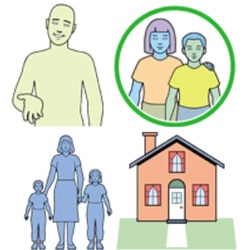
Source: Language Images
Number in Set: 12 symbols per board . Boards on specific topics only.
Cost: $3 per board to download
Format: Download and print
Type: Colour
Colour symbols available as ready made (you can also design your own) communication boards for download at $3 per board. There are also ready made picture schedules available.
Language, Learning, and Living Symbols
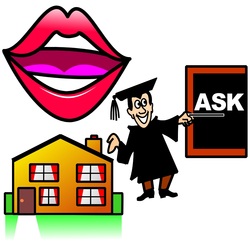
Source: Prentke Romich International
Number in Set: 128 symbols
Cost: Available only with the Language, Learning and Living Minspeak
application Program for Prentke Romich devices
Format: N/A
Type: Colour ( a black and white set was developed but never issued)
A set of 128 symbols used to populate the static 128 overlay of the original TouchTalker device and all devices that followed for teh Language, Learning and Living program designed and developed by Tony Jones in the last half of the 1980's at Portland Training College in Mansfield England although the system was first published in the very early 1990's. Using combinations of symbols an extensive vocabulary could be easily generated. Until, PRI decided to shelve the program in favour of Unity in 2009, it was the most popular UK Minspeak Application Program. Symbols had multi-functionality: for example, DAN below left stood for Describes A Noun and was therefore the category symbol for adjectives. As you can see, 'Dan, Dan the mixed up man' was both hairy and bald at the same time. He was both male and female, happy and sad, ... Adjectives were originally taught as ways of talking about (describing) people and then expanded into ways of describing 'things'. The symbol set was thus a means to teach language and not just vocabulary.
Lesson Pix Symbols
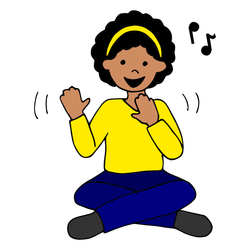
Source: LessonPix.com
Number in Set: Over 60,000 symbols
Cost: Download symbols from website. Cost to register is $36 per year
Format: .PNG, .SVG, .JPG and PDF
Type: Colour and B&W
LessonPix was created by Lori and Bill Binko for the people who support special learners. Their goal was an easy on-line tool to create specific, customized materials for parents, teachers and therapists. As the parents of a special needs child, their professional lives and talents lent to making this on-line set of tools to create learning materials, schedules and visual supports.
This a large set of some very nice symbols at what seems a very reasonable price. Presently Bill and Lori are working to add more symbols to the set to cover any omissions there might be. The site offers much more than just the download of symbols: It is a great resource and the site can be entered free of charge so that you can take a look and see for yourself. There is a good choice of symbols here at a reasonable price. Lots of curricular support symbols, well worth a look.
Number in Set: Over 60,000 symbols
Cost: Download symbols from website. Cost to register is $36 per year
Format: .PNG, .SVG, .JPG and PDF
Type: Colour and B&W
LessonPix was created by Lori and Bill Binko for the people who support special learners. Their goal was an easy on-line tool to create specific, customized materials for parents, teachers and therapists. As the parents of a special needs child, their professional lives and talents lent to making this on-line set of tools to create learning materials, schedules and visual supports.
This a large set of some very nice symbols at what seems a very reasonable price. Presently Bill and Lori are working to add more symbols to the set to cover any omissions there might be. The site offers much more than just the download of symbols: It is a great resource and the site can be entered free of charge so that you can take a look and see for yourself. There is a good choice of symbols here at a reasonable price. Lots of curricular support symbols, well worth a look.
Literacy Support Symbols
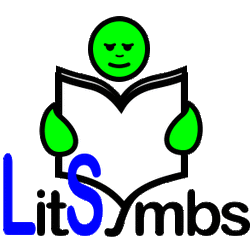
Lots of companies make claims that they have symbols that support literacy. That could be said of any comprehensive symbol set, if what the symbols are doing is simply accompanying text which, in the vast majority of cases, is exactly what 'literacy support' appears to mean. However, acquiring Literacy skills requires much more than providing a set of symbols... it is akin the claims made for weight loss devices which alway say something like 'maximum weight loss is achieved when use as a part of a calorie controlled diet'! Sure, symbols can help in the process of acquiring literacy but you cannot expect to throw a whole bunch of symbols at the issue and job done! For best results ... 'use as a part of a structured teaching approach'!! See this site's page on literacy for lots of ideas on symbol use and literacy development. Almost any symbol set will suffice for use with the ideas providing it has symbols for the words that you want to teach (not all symbol sets are that comprehensive). Ensure that the set has symbols for Core Vocabulary (the top 400 or so spoken words in any language). How does it illustrate 'is' as opposed to 'was'? Does it illustrate 'have', 'the', 'a', etc. and the basic concepts as listed in such works as the Boehm Test Of Basic Concepts (Boehm A.E., 1971) or the Bracken Basic Concept Scale (Bracken, B. 2006) or equivalent? How are the differences between I, me, my, and mine depicted? I would expect these and other questions to be answered by any symbol set claiming to support literacy.
There are some approaches which can truly claim to be literacy support symbols. The first of these was called 'symbol accentuation' and was developed by Professor Arnold Miller (Miller A. 1968, Symbol Accentuation - A new approach to reading, Doubleday Multimedia, Santa Ana, California)(Miller, A. & Miller, E.E. (1968) Symbol Accentuation: The perceptual transfer of meaning from spoken to written words. American Journal of Mental Deficiency, 73, 1, 200-208). This approach changes the nature of the printed word in some way so that it possessed some pictorial quality and, thus, made the printed word more 'iconic' and more 'readable'.. In the UK, this approach was promoted by Margaret Skeffington and Dorothy Jeffree (Jefree D., & Skeffington M. 1980, Let me read, Souvenir Press, London). Jones (Jones P.R. 1983. Symbol Accentuation: A controlled comparison of its effectiveness for teaching. initial word recognition to mentally handicapped pupils. BPS Division of Educational and Child Psychology Occasional Papers, &(1), 24-30) has shown that such an approach allows words to be more easily taught than by simply placing them below key pictures as seems to be the modern approach.
See also:
Danner, F. W., Taylor, A.M. (1973). Integrated pictures and relational imagery training in children's learning, Journal of Experimental
Child Psychology, Volume 16, Issue 1, August 1973, Pages 47-54
Worral, N. & Singh, Y. (1983) Teaching TMR children to read using integrated picture cueing, American Journal of Mental Deficiency, Volume 87, No. 4.
Devereux, K., Van Oosterom, J. (1984), Learning With Rebuses, National Council for Special Education, pages 34 and 35
Sheehy, K. (2002). "The Effective Use of Symbols in Teaching Word Recognition to Children with Severe Learning Difficulties". International Journal of Disability, Development and Education 49: 47-59
Sheehy, K. (2002). Overcoming failure to begin word recognition using a local feature strategy: The handle technique and children with severe learning difficulties. Learn: The Journal of the Irish Learning Support Association, 24 pp. 78–87.
Beers, K. (2003). When Kids Can't Read What Teachers Can Do. Portsmouth, NH: Heinemann
Kajder, S. (2006). Bringing the Outside In: Visual Ways to Engage Reluctant Readers. Stenhouse Publishers.
There are some approaches which can truly claim to be literacy support symbols. The first of these was called 'symbol accentuation' and was developed by Professor Arnold Miller (Miller A. 1968, Symbol Accentuation - A new approach to reading, Doubleday Multimedia, Santa Ana, California)(Miller, A. & Miller, E.E. (1968) Symbol Accentuation: The perceptual transfer of meaning from spoken to written words. American Journal of Mental Deficiency, 73, 1, 200-208). This approach changes the nature of the printed word in some way so that it possessed some pictorial quality and, thus, made the printed word more 'iconic' and more 'readable'.. In the UK, this approach was promoted by Margaret Skeffington and Dorothy Jeffree (Jefree D., & Skeffington M. 1980, Let me read, Souvenir Press, London). Jones (Jones P.R. 1983. Symbol Accentuation: A controlled comparison of its effectiveness for teaching. initial word recognition to mentally handicapped pupils. BPS Division of Educational and Child Psychology Occasional Papers, &(1), 24-30) has shown that such an approach allows words to be more easily taught than by simply placing them below key pictures as seems to be the modern approach.
See also:
Danner, F. W., Taylor, A.M. (1973). Integrated pictures and relational imagery training in children's learning, Journal of Experimental
Child Psychology, Volume 16, Issue 1, August 1973, Pages 47-54
Worral, N. & Singh, Y. (1983) Teaching TMR children to read using integrated picture cueing, American Journal of Mental Deficiency, Volume 87, No. 4.
Devereux, K., Van Oosterom, J. (1984), Learning With Rebuses, National Council for Special Education, pages 34 and 35
Sheehy, K. (2002). "The Effective Use of Symbols in Teaching Word Recognition to Children with Severe Learning Difficulties". International Journal of Disability, Development and Education 49: 47-59
Sheehy, K. (2002). Overcoming failure to begin word recognition using a local feature strategy: The handle technique and children with severe learning difficulties. Learn: The Journal of the Irish Learning Support Association, 24 pp. 78–87.
Beers, K. (2003). When Kids Can't Read What Teachers Can Do. Portsmouth, NH: Heinemann
Kajder, S. (2006). Bringing the Outside In: Visual Ways to Engage Reluctant Readers. Stenhouse Publishers.
Makaton Symbols
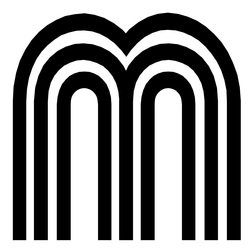
Source: Makaton Charity: Manor House, 46 London Road, Blackwater,
Camberley, Surrey GU17 0AA, UK
Number in Set: Approx 7,000 plus symbols
Cost: Prices for symbols start from around £20 depending on what you want
to purchase. Follow link to websote for futher information.
Format: .wmf
Type: B&W Line drawings
Makaton symbols were designed to accompany the Makaton signing system. They are simple black and white line drawings and are very clear. I used them very successfully for many years as a teacher. Lots of resources are avialable from the Makaton Charity website. Books of the symbols are also available. The site has a page of free resources.
Camberley, Surrey GU17 0AA, UK
Number in Set: Approx 7,000 plus symbols
Cost: Prices for symbols start from around £20 depending on what you want
to purchase. Follow link to websote for futher information.
Format: .wmf
Type: B&W Line drawings
Makaton symbols were designed to accompany the Makaton signing system. They are simple black and white line drawings and are very clear. I used them very successfully for many years as a teacher. Lots of resources are avialable from the Makaton Charity website. Books of the symbols are also available. The site has a page of free resources.
Metacom
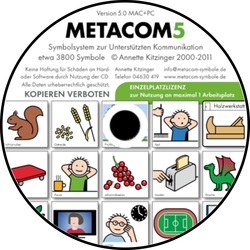
Source: Metacom
Number in Set: Approx 3,800 symbols
Cost: 72 Euros per set for a single licence (£63)
Format: .jpg and .bmp
Type: Colour and B&W
This German symbol set was originally developed for the author's daugter whose name was Meta. It is now one of the most popular German symbol sets. Symbols are avaiable in both black and white and in colour. They are simple and very clear. I am uncertain if there is an English version of the set but, no doubt, someone will enlighten me! Nice symbols!
Number in Set: Approx 3,800 symbols
Cost: 72 Euros per set for a single licence (£63)
Format: .jpg and .bmp
Type: Colour and B&W
This German symbol set was originally developed for the author's daugter whose name was Meta. It is now one of the most popular German symbol sets. Symbols are avaiable in both black and white and in colour. They are simple and very clear. I am uncertain if there is an English version of the set but, no doubt, someone will enlighten me! Nice symbols!
Minspeak Symbols
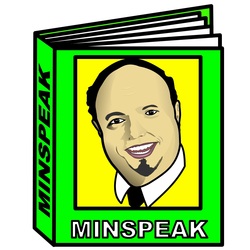
Source: Prentke Romich Company, Wooster, Ohio, USA.
Number in Set: Approx 5,000 symbols
Cost: Free to Download
Format: .jpg, .bmp
Type: Colour
The PRC symbol set are the icons used in the PRC device Minspeak Application Programs notably Unity. They are free to download from the PRC website. Classic Minspeak systems had a static display and therefore the maximum number of symbols used was 128 or 144 (depending on how old you are!). Currently, PRC have moved from the classic static structure to dynamic displays and, as such, a great many more symbols are used. To find out more about MInspeak visit the Minspeak site or take a look at the Talksense Minspeak page. See also Pixons below.
MÓWik symbols
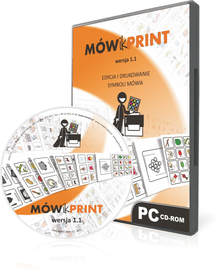
Source: ul. Wenecja 5/1, 31-117 Kraków , Poland
E-mail: [email protected]
Number in Set: 9,000 symbols
Cost: 250 PLN (about £53)
Format: N/A
Type: Colour and B&W
A Polish set of symbols which is bound in the Mowikprint program that allows the purchaser to build communication boards using the symbols at any size. Demo version can be downloaded from the website: http://www.mowik.pl/do_pobrania/pobierz_oprogramowanie_print.
Youtube: https://www.youtube.com/watch?v=tOi3k3PMhns&feature=youtu.be
Mulberry Symbols
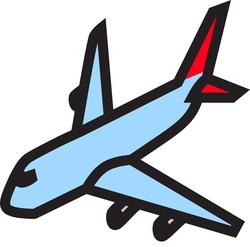
Source: Straight Street, c/o Garry Paxton, Paxtoncrafts Charitable Trust,
Pippins, The Orchard, Felsted, Essex, CM6 3DE
Number in Set: Approx 1,500 + symbols
Cost: FREE to download
Format: .wmf
Type: Colour and B&W
A wonderful FREE set of symbols that can be downloaded by logging into the Straight Street website. Simple, colourful symbols. Highly recommended!
Pippins, The Orchard, Felsted, Essex, CM6 3DE
Number in Set: Approx 1,500 + symbols
Cost: FREE to download
Format: .wmf
Type: Colour and B&W
A wonderful FREE set of symbols that can be downloaded by logging into the Straight Street website. Simple, colourful symbols. Highly recommended!
Northumberland LEA Clipart
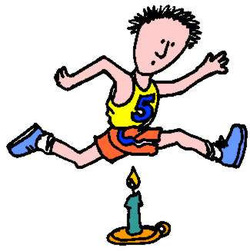
Source: Northumberland LEA
Number in Set: Approx 800 symbols
Cost: Free for non-commercial use
Format: .jpg, .bmp
Type: B&W, Colour
A nice free resource from Northumberland LEA. Approximately 800 colour and B&W symbols, divided into catgories and downloadable, one by one, from the website. The Clipart was produced by the Northumberland ICT Team and teachers, Chris Eblett - Darras Hall First School and Valerie Fairless - Bedlington West End First School.
Noun Project Symbols

Source: Noun Project Website
Number in Set: Over 1000
Cost: Approx $1 to download each but some are free
Format: .jpg and .png
Type: B&W drawings
Over 1,000 great quality B&W line drawings on this commercial site available for download at a cost (approx one dollar for each to download). However, there are some (around 100) which are public domain and can be obtained and used for any purpose free of charge (see examples below).
Number in Set: Over 1000
Cost: Approx $1 to download each but some are free
Format: .jpg and .png
Type: B&W drawings
Over 1,000 great quality B&W line drawings on this commercial site available for download at a cost (approx one dollar for each to download). However, there are some (around 100) which are public domain and can be obtained and used for any purpose free of charge (see examples below).
Oakland School Symbols
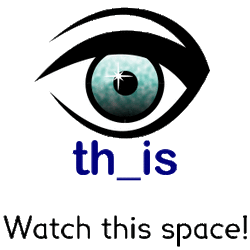
Source: Kirstein, I. (1981). Oakland Schools Picture Dictionary.
Wauconda, IL: Don Johnston.
Number in Set: Approx 600 symbols
Cost: $50
Format:
Type: B&W line drawings
More than 600 simple line drawings divided into 20 major categories with alphabetical and categorical indexes. The line drawings are in three sizes - 2 inch, 1 inch and 1/2 inch and they provide sample communication boards and grids. There is a new supplemental section containing more than 100 drawings. The set was developed by Ina J. Kirstein, M.A., Consultant, Assistive Technology and illustrated by Carol Bernstein
Parler Pictos
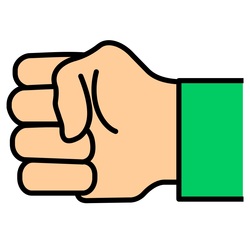
Source: Parlerpictos Software (formerly communimage5):
Centre for Augmentative oral and written communication Quebec
CSCOE, Rousselot 8200, local 0111, Montreal, Canada, H2E 1Z6
Number in Set: Approx 2,735 symbols
Cost: from $175
Format: ??
Type: B&W and Colour
Very nice set of over 2,500 black and white and colour symbols from this Canadian company. Simple and clear. Available on CD. I am not sure if an English version of the software is available, however, being Canada, I would be surprised if there is not.
Pasigraphy
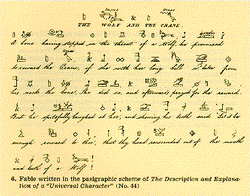
Pasigraphy (from the Greek 'pasi' - 'to all' and 'graph' - 'write') is a universal system of symbols something akin to Blissymbolics or Earth Language (see both above) or, perhaps, yingzi. There have been a number of attempts at developing a pasigraphic system but none have ever caught on although the idea is very appealing. The term was first applied to a system proposed in 1796, though there were cetainly a number of pasigraphies devised prior to that; for example, Cave Beck's The Universal Character (1657) London; William Weekly.
Mr Bliss believed that a universal language and writing system wouold put an end to conflict and wars because, if people could communicate effectively, there woud be little misunderstanding. I am a little suspicious of the notion as there are often civil wars of different parts ofthe same nation in which both parties speak and write the same language but, still, there is an aggressive conflict. However, that is not to devalue Mr Bliss' contribution or his system which is excellent. Pasigraphy does not represent a symbol system per se: there is no single set of symbols called 'Pasigraphy symbols'; rather it is a concept out of which several sets of symbols have been born and, I am sure, still has a great fecundity. Thus, there is no illustration of 'this set' of symbols, as it does not exist as a set! If you know of extant pasigraphic systems that are not represented on this page, please contact me with the details.
Mr Bliss believed that a universal language and writing system wouold put an end to conflict and wars because, if people could communicate effectively, there woud be little misunderstanding. I am a little suspicious of the notion as there are often civil wars of different parts ofthe same nation in which both parties speak and write the same language but, still, there is an aggressive conflict. However, that is not to devalue Mr Bliss' contribution or his system which is excellent. Pasigraphy does not represent a symbol system per se: there is no single set of symbols called 'Pasigraphy symbols'; rather it is a concept out of which several sets of symbols have been born and, I am sure, still has a great fecundity. Thus, there is no illustration of 'this set' of symbols, as it does not exist as a set! If you know of extant pasigraphic systems that are not represented on this page, please contact me with the details.
Passports to Independence Symbols
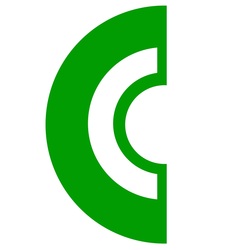
Source: Crestwood Communication Aids, Inc. P.O. Box 090107,
Milwaukee, WI 53209-0107, USA
Number in Set: Approx ?? symbols
Cost:
Format:
Type: B&W Picture cards
A set of symbol cards and stickers from Crestwood Communication Aids produced by the company's President, Ruth Leff who is a long standing Speech-Language Pathologist. I am afraid to say that the company is going out of business and that products, it would appear, will soon be no longer available, There is currently a very good sale on the site. As a past Managing Director of two companies myself, I find it sad when companies serving the AAC field can no longer continue. I wish Ruth well. I hope this is not yet another example of symbols lost to the AAC field.
PCS (Picture Communication Symbols)
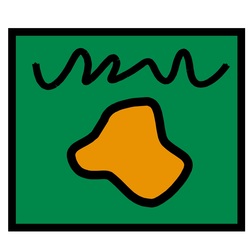
Source: DynaVox Mayer-Johnson, 2100 Wharton Street, Suite 400,
Pittsburgh, PA 15203, USA
Number in Set: Approx 9,000 symbols
Cost: Now only available through Boardmaker and selected AAC devices
Format: .wmf
Type: Colour
PCS was one of the first and has become one of the most popular symbol sets in use in special education around the world today. PCS set the standard for many of the symbols sets that were to follow. Originally the set was obtainable as a stand alone product but, since the company's take-over by Dynavox, the set is now restricted to AAC software and devices which I think is rather a shame. However, if you use Boardmaker the symbos are still available and many AAC companies license the use of the symbol set.
Pick 'n Stick Symbols
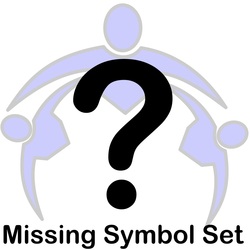
Source: Imaginart
Number in Set: Approx 1,200 symbols
Cost: ??
Format: ??
Type: Colour and B&W
Originally available as a sticker set but then made available from a CD, these colour and B&W symbols appear to be no longer available. If anyone has any further information on this set, please contact me and let me know.
PICOL Symbols

Source: Picol.org
Number in Set: Approx 550 but 108 different symbols
Cost: Download FREE
Format: .png , .svg
Type: B&W
Great free set of simple and very clear black and white symbols, too limited in scope to be of extensive use to people requiring AAC but a very nice set nevertheless. PICOL stands for PIctorial COmmunication Language and is a project to find a standard and reduced sign system for electronic communication. PICOL is free to use and to open to alter. Click on the ball to go to the site. Worth a visit.
Picsyms
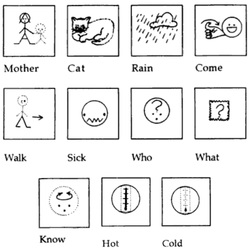
Source: Poppin & Company
Number in Set: Approx 850 symbols
Cost: No longer available. See Dynasyms
Format: N/A
Type: B&W
Title Picsyms Categorical Dictionary
Author Faith Carlson
Publisher Poppin & Company Communication Materials, 1995
ISBN 1886498024, 9781886498020
Length 186 pages
PicSyms can perhaps be called the earliest form of Dynasyms because Dynasyms were based on a hand drawn communication system called PICSYMS first published in 1985. Faith Carlson, a Speech and Language Pathologist developed these during her work with children and adults at Meyer Children's Rehabilitation Institute, University of Nebraska Medical Centre. Some of the early PICSYMS concepts have been maintained through the continuing development of the set by Faith: for example, the positional concepts (such as in and out) have changed very little.
Pictobabble Symbols
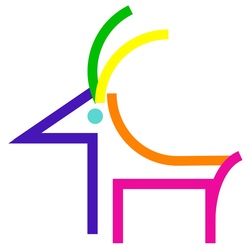
Source: http://www.symbols.net/
Number in Set: 2000 word vocabulary
Cost: ???
Format: ???
Type: Colour - though I am unsure of the relevance of each particular
colour to the meaning of any word, if any.
A very interesting idea by George Sutton. Best understood by visiting the website (Click on the symbol left). Pictobabble is a constructed language that is both pictographic and phonetic, with a 48 letter alphabet called a Pictobet. A word in the Pictobabble language is a babel of "picture parts" until the reader assembles the parts in his mind. Each letter of a word contributes a sound and part of a simple drawing. Every phoneme is also a morpheme. The Pictobabble language spells the parts of pictures. Whereas, in reading english, the reader sounds out a word to get the meaning, in Pictobabble, the reader assembles the "picture-parts" in his head to decipher the meaning. I'm not sure that it is a good system for AAC but it is interesting nevertheless!
Pictogram Symbols
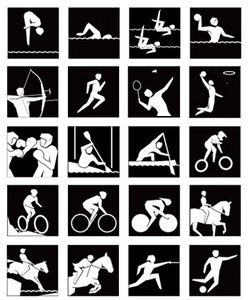
Source: More than one source. Click on the image left for one possible source.
Number in Set: At least 1400 symbols
Cost: Some freely avialable, some will cost depending on source
Format: Depends on source
Type: These are typically white symbols on a black background,
especially useful for some people who have a visual mpairment.
However, if you do a web search for pictogram symbols you will find
both white on black and black on white and even colour ones!
It's difficult to state one single source for pictogram symbols because they appear to be all over the web! Classical pictograms are simple, easy to recognise, white symbols on black blackground as depicted but there are variations and even coloured pictograms are to be found. Some sources charge for their symbols (or for the software that houses their symbols) and others give away a few pictograms free of charge ... it depends where you go and how hard you look! The original symbol set seems to be the Pictograph Ideograph Communication Symbol set that immediately follows developed in 1980 by Subhas C. Maharaj (see following set)
For a definition of a pictogram, you need look no further than Wikipedia .... http://en.wikipedia.org/wiki/Pictogram If you go there, you will see that they use an even broader definition of the term. However, for the purposes of this page, we will confine our definition to white images on black backgrounds as shown in the examples below. Pictograms can come with or without text accompaniment.
Pictograph Ideograph Communication (PIC) Symbols
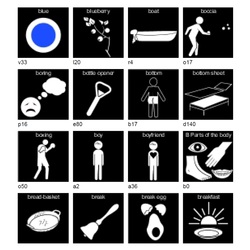
Source: Uncertain if these are still commercially available. If they are will
someone please let me know?
Number in Set: Approx 1400 symbols
Cost: Free .pdf download but not very sharp screen quality (click image)
(might be ok printed)
Format: Unknown
Type: White on Black background.
Developed in 1980 by Maharaj, Subhas C., these seem to be the orignal source of the Pictogram symbols as detailed above although I cannot state that definitively.
Maharaj, S. C. (1980). Pictogram ideogram communication. Regina, Saskatchewan, Canada: The George Reed Foundation for the Handicapped.
Picture Dictionary Symbols

Source: Internet Picture Dictionary
Number in Set: Approx 150 symbols
Cost: FREE to downlaod from web
Format: .gif
Type: Colour
Approximately 130 colour gif symbols that are free to download from the Picture Dictionary website. Not an extensive set but nicely drawn nevertheless. The images are quite small in size and pixellate if stretched too far but would work well on overlays requiring only smallish symbols. Symbols are arranged alphabetically and by category. Well worth a check.
Picture Express Symbols
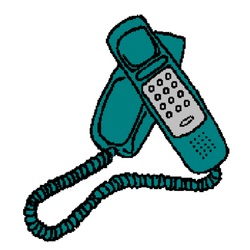
Source: Picture Express Software, 4682 Cruickshank Avenue,
Courtenay, B.C., Canada, V9N 8T5
Number in Set: Approx 630 symbols
Cost: FREE trial available: $200 software (Canada)
Format: Only availablae in Picture Express software
Type: Colour and B&W
Small set of embedded in software symbols which can be produced in colour or black and white. Mostly nouns. There is a free thirty day trial of the sofware in which the symbols can be viewed.
Pixons
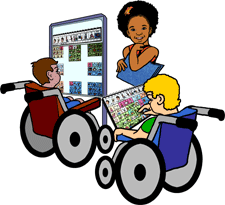
Source: MInspeak, Semantic Compaction Systems, Pittsburgh, USA
Number in Set: Approx 1,800 symbols
Cost: £99 (UK)
Format: .bmp and Boardmaker format
Type: Colour
Minspeak's way of promoting Minspeak systems by providing an entry level system of symbols and communication systems. Although the Pixon document claims "By introducing Pixons™ as an initial symbol set, the child (and adult), family, and support team gain familiarity with pictures that are VERY similar to the pictures used in Minspeak and other AAC devices." (About Pixons, page 2) the symbols are much closer in resemblance (and in the concepts used) to the Prentke Romich Unity icon set than they are to any other set. Thus, it would be easier for a child to move from Pixons to Unity than it would from Pixons to a Dynavox equivalent for example. That does not devalue them, it simply states the obvious; the system is a means of promoting Minspeak systems above others ... of course it is: you would not expect any company to do otherwise! The company do not try to keep this a secret, they say so themselves: "Pixons™ also use the key icons from the Minspeak Application Program. Start your child off with Pixons™ so when he/she is ready to have a Minspeak device, he/she will already be familiar with the basic pictures that are used in a Minspeak system. The Pixons™ are stepping-stones to talking with a Minspeak device!" (About Pixons. page 2)
The symbols cover core vocabulary concepts. If a Minspeak system with Unity is a likely choice of communication system for the future then I would totally recommend them. However, if you are thinking along other lines, for example, something on an iPad, a notebook, a Dynavox, a Tellus, a Tobii, a Gus (or any of the many others) you have lots of other choices as evidenced by this page.
Number in Set: Approx 1,800 symbols
Cost: £99 (UK)
Format: .bmp and Boardmaker format
Type: Colour
Minspeak's way of promoting Minspeak systems by providing an entry level system of symbols and communication systems. Although the Pixon document claims "By introducing Pixons™ as an initial symbol set, the child (and adult), family, and support team gain familiarity with pictures that are VERY similar to the pictures used in Minspeak and other AAC devices." (About Pixons, page 2) the symbols are much closer in resemblance (and in the concepts used) to the Prentke Romich Unity icon set than they are to any other set. Thus, it would be easier for a child to move from Pixons to Unity than it would from Pixons to a Dynavox equivalent for example. That does not devalue them, it simply states the obvious; the system is a means of promoting Minspeak systems above others ... of course it is: you would not expect any company to do otherwise! The company do not try to keep this a secret, they say so themselves: "Pixons™ also use the key icons from the Minspeak Application Program. Start your child off with Pixons™ so when he/she is ready to have a Minspeak device, he/she will already be familiar with the basic pictures that are used in a Minspeak system. The Pixons™ are stepping-stones to talking with a Minspeak device!" (About Pixons. page 2)
The symbols cover core vocabulary concepts. If a Minspeak system with Unity is a likely choice of communication system for the future then I would totally recommend them. However, if you are thinking along other lines, for example, something on an iPad, a notebook, a Dynavox, a Tellus, a Tobii, a Gus (or any of the many others) you have lots of other choices as evidenced by this page.
Quickpics
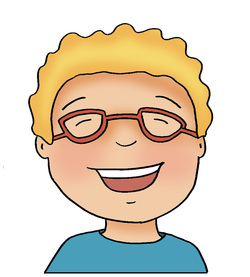
Source: http://www.patrickecker.org/quickpics.htm
Number in Set: Approx 400 symbols
Cost: FREE
Format: jpg
Type: Colour
Quickpics is a free piece of software downloadable from the web (Click on image left) with a couple of small symbol libraries containing approximately 400 very nicely drawn symbols. It's a bit of a shame that the symbols are all jpgs because the images will always carry a white background (which you cannot see on a white page!) which will stand out on coloured cells and mask the background somewhat. If they had been available as .gifs then they would have been even more useful! However, if you are making white pages or are printing onto white paper then the symbols are free and very nice. Take a look, download the software, downlaod the additional symbol libraries. It's a nice site with nice resources for free!!
Number in Set: Approx 400 symbols
Cost: FREE
Format: jpg
Type: Colour
Quickpics is a free piece of software downloadable from the web (Click on image left) with a couple of small symbol libraries containing approximately 400 very nicely drawn symbols. It's a bit of a shame that the symbols are all jpgs because the images will always carry a white background (which you cannot see on a white page!) which will stand out on coloured cells and mask the background somewhat. If they had been available as .gifs then they would have been even more useful! However, if you are making white pages or are printing onto white paper then the symbols are free and very nice. Take a look, download the software, downlaod the additional symbol libraries. It's a nice site with nice resources for free!!
Rebus Symbols
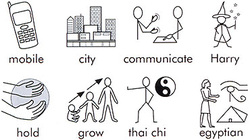
Source: Widgit (see Widgit below)
Number in Set: over 7,000 symbols
Cost: Within Widgit software
Format: N/A
Type: B&W (but some can be found in colour)
A rebus is a picture used to represent words or parts of words. It was a form of heraldic expression used in the Middle Ages to denote surnames: for example, in its most basic form, an anvil to denote the name 'Smith'. The picture or symbol could then stand in place of the name, profession or personal characteristics of any person. Rebus is latin for 'things' Non verbis, sed rebus ('not by words but by things').
The Rebus symbols set was developed from the 'American Peabody Rebus Reading Program' designed at the George Peabody College in Tennessee (Woodcock R.W., Clark C.R., and Davies C.O. 1969), in the late 1960s, to teach reading skills to children and, later, adopted, adapted, and anglicised by Judy van Oosterom and Kathleen Devereux to make them more useful as a tool to support for language development with pupils experiencing learning difficulties. This set was first published in booklet form by LDA in the UK. The majority of Rebus symbols are, thus, stylised B&W pictures representing objects, actions and attributes of objects. The total number of symbols is increasing each year and, to date, there are over 7,000 symbols available. They can be reproduced in colour from within the software.
Various developments of rebus have taken place since its first use in an educational sense for teh Peabody reading scheme. Among the developments are:
MELDS: Minnesota Early Language Development Scheme (Clark, Moores and Woodcock 1975). Melds was a receptive language program designed for hearing impaired children with little or no language. Teaching takes place along parallel lines with symbols from the Standrad Rebus Glossary together with American Sign Language and speech. A variety of instructional materials were produced as well as the MELDS glossary of rebuses and signs (Clark and Greco 1973) which details almost 400 paired signs and rebuses used in the program.
Clark Early Language Program: The CELP (Clark and Moores1984) addressed grammatical development using parts of speech and simple sentence consruction. It aimed to teach both expressive and receptive language at a functional level to Learners with language or hearing impairments. The symbol involved approximately 150 rebus symbols, spoken language and an optional use of Signed English (SE).
Bristol Polytechnic: A project was undertaken by Jones (Jones K., Peabody Rebus Reading Scheme, in T. Tebbs (ed.) Ways and Means. Globe Education. Basingstoke) and used a teaching technique which was similar to that used by Deich and Hodges (see earlier this page) to accelerate the development of normal speech.
Learning With Rebuses: Also in the UK, developmental work was undertaken at the Rees Thomas School in Canbridge in the Early 1980s by Judy Van Oosterom and Kathleen Devereux. Their work was published in the books 'Rebus at Rees Thomas School' (1982) and in 'Learning with Rebuses' in 1984.
Widgit Symbols: Presently development work on Rebus Symbols is being brilliantly undertaken by Widgit. However, Rebus Symbols are not exclusively their intellectual property as such (although those created by Widgit certainly do belong to them) and anyone is at liberty to develop their own set of such symbols based on the early work of Woodcock et al.
MELDS: Minnesota Early Language Development Scheme (Clark, Moores and Woodcock 1975). Melds was a receptive language program designed for hearing impaired children with little or no language. Teaching takes place along parallel lines with symbols from the Standrad Rebus Glossary together with American Sign Language and speech. A variety of instructional materials were produced as well as the MELDS glossary of rebuses and signs (Clark and Greco 1973) which details almost 400 paired signs and rebuses used in the program.
Clark Early Language Program: The CELP (Clark and Moores1984) addressed grammatical development using parts of speech and simple sentence consruction. It aimed to teach both expressive and receptive language at a functional level to Learners with language or hearing impairments. The symbol involved approximately 150 rebus symbols, spoken language and an optional use of Signed English (SE).
Bristol Polytechnic: A project was undertaken by Jones (Jones K., Peabody Rebus Reading Scheme, in T. Tebbs (ed.) Ways and Means. Globe Education. Basingstoke) and used a teaching technique which was similar to that used by Deich and Hodges (see earlier this page) to accelerate the development of normal speech.
Learning With Rebuses: Also in the UK, developmental work was undertaken at the Rees Thomas School in Canbridge in the Early 1980s by Judy Van Oosterom and Kathleen Devereux. Their work was published in the books 'Rebus at Rees Thomas School' (1982) and in 'Learning with Rebuses' in 1984.
Widgit Symbols: Presently development work on Rebus Symbols is being brilliantly undertaken by Widgit. However, Rebus Symbols are not exclusively their intellectual property as such (although those created by Widgit certainly do belong to them) and anyone is at liberty to develop their own set of such symbols based on the early work of Woodcock et al.
Sclera Pictograms

Source: Sclera NPO, Heidestraat 12, 2070 Zwijndrecht, Belgium
Number in Set: Approx 4,769 symbols
Cost: FREE to download
Format: .png
Type: White and Coloured symbols on black background
A great set of free B&W (some coloured) symbols from this Belgium company. The site has an English button so it is is avialable to a wider audience. The symbols can be downlaoded one by one (by searching for a required symbol in the library or, simply, by going to teh downloads page and downloading the whole set. Nicely drawn, very clear symbols. Recommended.
SigSymbols
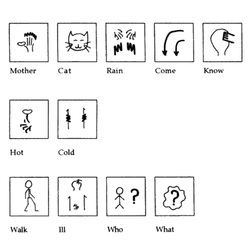
Source: Ailsa Cregan, 76 Wood Close, Hatfield, Herts, AL10 8TX, England
(no longer published)
Number in Set: Originally 240 symbols
Cost: Original books may still available through Amazon (et al) for pennies
but they won't be around for very long!
Format: N/A
Type: B&W (some use of colour within some symbols)
One of the the original sets of symbols dating back to the early 1980s. Sigsymbols were originally developed in England by Ailsa Cregan in 1982 to cover those who knew British Sign Language or were about to learn sign language. The system was later extended (Cregan and LLoyd, 1984) to include the American Sign Language. The system consists of pictographs, ideographs and sign linked symbols. The sign linked symbols represet the positions of the hands in signing and can include the location of the sign on a particular area of the body and/or the direction of the sign. Since signs are dependent upon the country of origin there needs was differentiation fro ASL from BSL for example. The symbols are simple black and white line drawings with some use of colour to indicate movement or to highlight a particular feature of the image. Tis set is no longer available although the original books may still be available from some second-hand bookstores.
Cregan, A. (1982). Sigsymbol dictionary. Cambridge: LDA.
Cregan, A., and LLoyd, L. (1990): SigSymbols Don Johnston
Signology Symbols
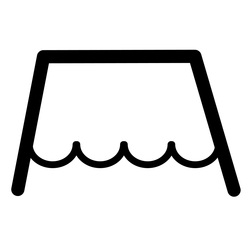
Source: WWW. signology.org (Link no longer works)
Number in Set: Appeared to be an idea for a sign for every word
Cost: originally free
Format: N/A
Type: Black and white
This website link is no longer functional and, therefore, I must assume that the Signology symbols are also no longer available and this is another idea/system/set that has fallen by the wayside. I have reproduced a few of the original set below ... the symbols can still be found on the web if you look hard enough but, I must admit, you have to look very hard!
Signology symbols were a comprehensive set of B&W line drawings that were pictographs and ideographs. For example, the sign above left is the sign for 'impossible' representing a tub of water upside down with the water staying in place. The signs below are for 'day', 'always', and 'town' respectively. Signology symbols were originally devised by by Juan Garay. "Signology is the art of writing with pictures. If pictures were
suitable only to represent concrete things their scope would be very limited. But this is not the case. Pictures can be used to represent verbs and abstract concepts and therefore a whole language can be built on pictures."
Signwriting Symbols
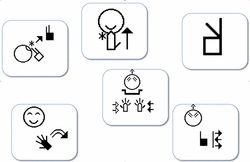
Source: Valerie Sutton, Signwriting shop, PO Box 517, La Jolla CA,
92038-0517, USA
Number in Set: A symbol for every sign
Cost: Varies according to product and there are lots of products!
Format: Varied: some on CDs, lots of printed material, some downloadable
pdfs
Type: B&W
This is an extremely comprehensive site. Signwriting is a easy to understand system that converts manual signs into symbols. Symbols that are formed around signs for the deaf. There are therefore different sets for differing countries. Singwriting is a way to write down signs for the deaf on paper. They can be used to communicate or to teach or for any other purpose of which you can conceive. The signwriting system was invented by Valerie Sutton. Nice clear symbols. Recommended, especially for those who use BSL or ASL or ...
Slater Software Symbols
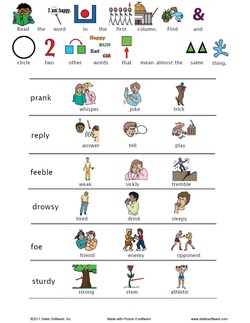
Source: Slater Software, Inc., 351 Badger Circle, Guffey, CO 80820, USA
Number in Set: Approx 10,500 symbols
Cost: Prices for main software titles start at around $200
Format: Available only with 'Slater Software's' software programs
Type: B&W and Colour
A nice set of symbols developed for use in Slater Software's programs (Picture it and Pix Writer). There are lots and lots of free downloadable resources on the website in .pdf form to use in the classroom. The resources are linked to the American curriculum but are still very useful for any English speaking situation. The example left is a page from one of them. Click on it to enlarge. The Slater Software website can be reached by clicking on any of the links in this text. The symbols are NOT available as a separate stand-alone set.
Softpics (Fantasticpics) Symbols
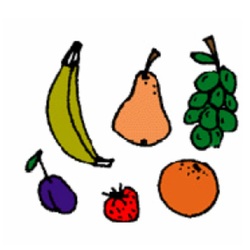
Source: Innovative Computer Programming, 9 Oaklands Avenue,
Beecroft, NSW 2119 Australia
Number in Set: Approx 30,800 symbols
Cost: No longer available sadly
Format: .jpg
Type: Colour
Fantasticpics are the symbol set inside the softpics software. they are available with the software or just as a set of 3,000 symbols on CD. ICP was established by Ylana Bloom and Dolly Bhargava who are speech pathologists specialising as augmentative communication consultants. SoftPics was developed by Ylana Bloom. There are a few free resources on the website to download.
Somerset Total Communication Symbols
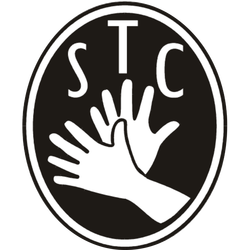
Source: Somerset County Council
Number in Set: Approx 4,000 symbols
Cost: £36
Format: ??
Type: Mainly B&W line drawings (a few with colour)
Somerset Total Communication symbols are available on a ‘Simple Symbols’ CD. The set contains over 4000 b&W rebus style symbols.The set is available from:
Somerset Total Communication
c/o Resources for Learning,
Parkway, Bridgwater, Somerset TA6 4RL
Tel: 01278 444949
Email: [email protected]
Number in Set: Approx 4,000 symbols
Cost: £36
Format: ??
Type: Mainly B&W line drawings (a few with colour)
Somerset Total Communication symbols are available on a ‘Simple Symbols’ CD. The set contains over 4000 b&W rebus style symbols.The set is available from:
Somerset Total Communication
c/o Resources for Learning,
Parkway, Bridgwater, Somerset TA6 4RL
Tel: 01278 444949
Email: [email protected]
Speech Page Symbols
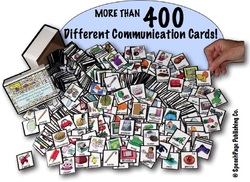
Source: SpeechPage.com Publishing Co., P.O. Box 356,
North Olmsted, OH 44070, USA
Number in Set: Approx 400 symbols plus lots of other materials
Cost: $65 for symbol set cards: ready laminated. Other items vary in price.
Format: Symbols on cards
Type: Colour
Lots of resources for professionals and non-professionals alike working in the field of AAC from this American company: communication cards, stickers, sheets of symbols and much more beside. Worth a look!
Straight Street Symbols
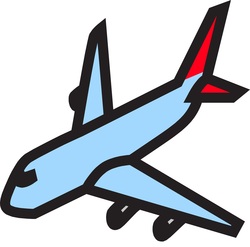
See MULBERRY SYMBOLS (above)
SymbolStix
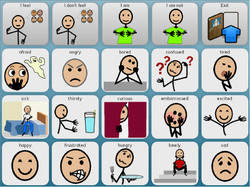
Source: News-2-You Inc., PO Box 550, Huron,
OH 44839, USA
Number in Set: Approx 12,000 symbols
Cost: Annual Subscription $99
Format: ??
Type: Colour
SymbolStix is a collection of over 12,000 colour symbols developed by News-2-you. They claim that they possess the 'the most complete and current symbol set available anywhere.' I am sure that Widgit or Unlimiter (and a couple of others) will have something to say about that! It most certainly is not the biggest symbol set around and what they mean by 'complete' is anybody's guess! It is not that clear what the $99 annual subscription provides (perhaps someone who has paid it can enlighten me?). Can you download all 12,000 plus symbols in one go for example or, is it a one-at-a-time situation or, are they locked away somehow? If you can download all 12,000, why would you pay another $99 the following year? Having access to 'current' symbols is really not all that necessary: most things can be said using a few hundred core vocabulary concepts... look up the word in a dictionary and it will define it using such vocabulary. Furthermore, you can find most 'current' concepts available as clipart for free on the internet is you are prepared to dig around a bit. However, News-2-you are a business and need to recover their costs to stay in business and, so, such claims go with the territory!
Getting past the business hype, the symbols are well drawn, clear and very nicely thought out. $99 for 12,000 symbols (if that is true) represents good value for money although you can get as many symbols for free if you look around. It's presumably called SymbolStix because it uses stick men to illustrate a great many of the concepts. I like the set. It's all together in one place. I would recommend it. The set is being used in a number of AAC devices.
OH 44839, USA
Number in Set: Approx 12,000 symbols
Cost: Annual Subscription $99
Format: ??
Type: Colour
SymbolStix is a collection of over 12,000 colour symbols developed by News-2-you. They claim that they possess the 'the most complete and current symbol set available anywhere.' I am sure that Widgit or Unlimiter (and a couple of others) will have something to say about that! It most certainly is not the biggest symbol set around and what they mean by 'complete' is anybody's guess! It is not that clear what the $99 annual subscription provides (perhaps someone who has paid it can enlighten me?). Can you download all 12,000 plus symbols in one go for example or, is it a one-at-a-time situation or, are they locked away somehow? If you can download all 12,000, why would you pay another $99 the following year? Having access to 'current' symbols is really not all that necessary: most things can be said using a few hundred core vocabulary concepts... look up the word in a dictionary and it will define it using such vocabulary. Furthermore, you can find most 'current' concepts available as clipart for free on the internet is you are prepared to dig around a bit. However, News-2-you are a business and need to recover their costs to stay in business and, so, such claims go with the territory!
Getting past the business hype, the symbols are well drawn, clear and very nicely thought out. $99 for 12,000 symbols (if that is true) represents good value for money although you can get as many symbols for free if you look around. It's presumably called SymbolStix because it uses stick men to illustrate a great many of the concepts. I like the set. It's all together in one place. I would recommend it. The set is being used in a number of AAC devices.
Tawasol Symbols
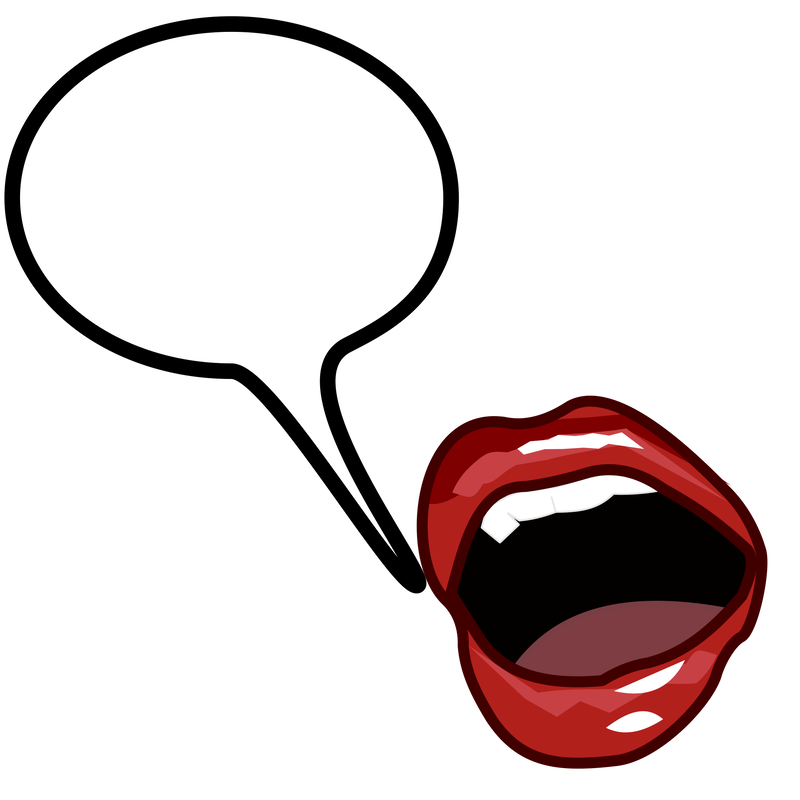
Source: http://tawasolsymbols.org/
Number in Set: Approx 600 colour symbols and 150 B&W
Cost: Free to download
Format: .png and .jpg
Type: Colour and B&W
A small symbol set for the Arabic speaking world available to download for free in either Arabic or English featuring images of people and objects etc from a Muslim perspective. Images are available in both colour and black and white.
Number in Set: Approx 600 colour symbols and 150 B&W
Cost: Free to download
Format: .png and .jpg
Type: Colour and B&W
A small symbol set for the Arabic speaking world available to download for free in either Arabic or English featuring images of people and objects etc from a Muslim perspective. Images are available in both colour and black and white.
Tech/Syms

Source: AMDI, 95 Sherwood Avenue, Farmingdale, NY 11735, USA
Number in Set: Approx 600 symbols
Cost: Free to use for AMDI products
Format: .wmf
Type: Colour
Nice, clear, simple, small set of around 600 colour .wmfs for use on AMDI AAC products. Set is arranged alphabetically.
Todd Parr Feelings Flash Cards
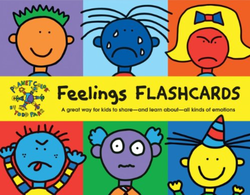
Source: Bookstores (For example Amazon)
Number in Set: 20 cards featuring 40 feelings
Cost: around $12
Format: Ready Printed format
Type: Colour
Designed for children to learn all about feelings by illustrator and author Todd Parr. Todd Parr's books often deal with feelings. These flashcards are of a similar style, and therefore complement his other works. The cards are thick and sturdy and are easier for those with limited physical skills to hold. Worth a look if you are interested in symbols for emotions.
Todd Parr has sold over 2 million copies of his books. Other Todd Parr titles:
It's OK to Be Different by Todd Parr / Little, Brown Young Readers/ May 2004 / $9.99
The Family Book by Todd Parr / Little, Brown Young Readers / October 2003 / $15.99
The Mommy Book by Todd Parr / Little, Brown Young Readers / April 2002 / $15.99
Number in Set: 20 cards featuring 40 feelings
Cost: around $12
Format: Ready Printed format
Type: Colour
Designed for children to learn all about feelings by illustrator and author Todd Parr. Todd Parr's books often deal with feelings. These flashcards are of a similar style, and therefore complement his other works. The cards are thick and sturdy and are easier for those with limited physical skills to hold. Worth a look if you are interested in symbols for emotions.
Todd Parr has sold over 2 million copies of his books. Other Todd Parr titles:
It's OK to Be Different by Todd Parr / Little, Brown Young Readers/ May 2004 / $9.99
The Family Book by Todd Parr / Little, Brown Young Readers / October 2003 / $15.99
The Mommy Book by Todd Parr / Little, Brown Young Readers / April 2002 / $15.99
Unlimiter Symbols
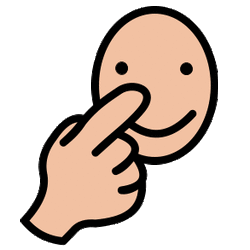
Source: Unlimiter (Taiwan) / Ability-World (UK)
Number in Set: 25,000 in the Colour Simple style (the number is growing),
plus more symbols available in other styles.
Cost: Only available with Unlimiter software products
Format: N/A
Type: Colour (simple), Colour (Realistic), B&W (Simple), B&W (Realistic),
Photograph, animated 2-D, and animated in 3-D
Unlimiter have a fantastic set of multi-national symbols that come in 7 distinct flavours (see above). Presently, the symbols are only avialable with one of their software titles (Voice Symbol OR Picture Master Language Software). The symbols are clear, very well drawn and have a very comprehensive multinational spread as the set is available from the USA to China and all points in between. Their three dimensional animated symbols have to be seen to be believed
Use Visual Strategies Symbols
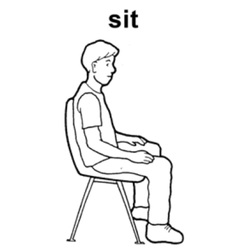
Source: QuirkRoberts Publishing, P.O. Box 71, Troy,
MI 48099-0071, USA
Number in Set: 4 sets each of 12 images
Cost: FREE to download
Format: Download and print
Type: B&W line drawings
A site for ASD with a few free, very clear, simple, black and white line drawings available for download. Two categories: Behaviour and Emotions. Two sets of drawings for each category.
A nice site, well worth a visit!
Visitaal Symbols
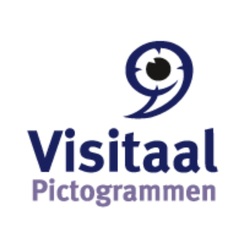
Source: Visitaal, Amsterdam, Holland
Number in Set: Approx 1,400 symbols (1,200 concepts)
Cost: €120 (printed cards sets vary in price)
Format: Either printed on cards or through the Pictoworks software program
Type: White images on black background
A very nice set of B&W symbols from the Dutch company. The symbols are available in ready printed format (boxes of cards) as well as for the computer through the Pictoworks software program. It is unclear to me at this time as to whether the symbols are available with English text.
Number in Set: Approx 1,400 symbols (1,200 concepts)
Cost: €120 (printed cards sets vary in price)
Format: Either printed on cards or through the Pictoworks software program
Type: White images on black background
A very nice set of B&W symbols from the Dutch company. The symbols are available in ready printed format (boxes of cards) as well as for the computer through the Pictoworks software program. It is unclear to me at this time as to whether the symbols are available with English text.
Widgit Symbols
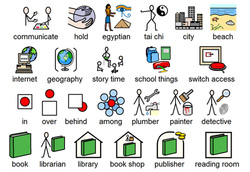
Source: Widgit Software, 26 Queen St., Cubbington, Leamington Spa,
Warwickshire CV32 7NA, UK
Number in Set: Approx 10,000 symbols
Cost: £99 for single machine licence for metafile Collection
Format: .emf, .png, .jpg
Type: Colour
Saving the best till last? Not quite! Certainly, Widgit symbols are one of the better sets of communication symbols but it is a matter of opinion which is the best set. However, this symbol set is well drawn and very comprehensive and applies logical rules throughout to avoid inconsistencies of concepts. £99 for 10,000 symbols is a good price and I recommend the set to you.
Warwickshire CV32 7NA, UK
Number in Set: Approx 10,000 symbols
Cost: £99 for single machine licence for metafile Collection
Format: .emf, .png, .jpg
Type: Colour
Saving the best till last? Not quite! Certainly, Widgit symbols are one of the better sets of communication symbols but it is a matter of opinion which is the best set. However, this symbol set is well drawn and very comprehensive and applies logical rules throughout to avoid inconsistencies of concepts. £99 for 10,000 symbols is a good price and I recommend the set to you.
Return to the Symbol Studies Page
Click on the Left Arrow below to retrun to the Symbol Sudies page or hit the Up Arrow to return to the top of this page.
